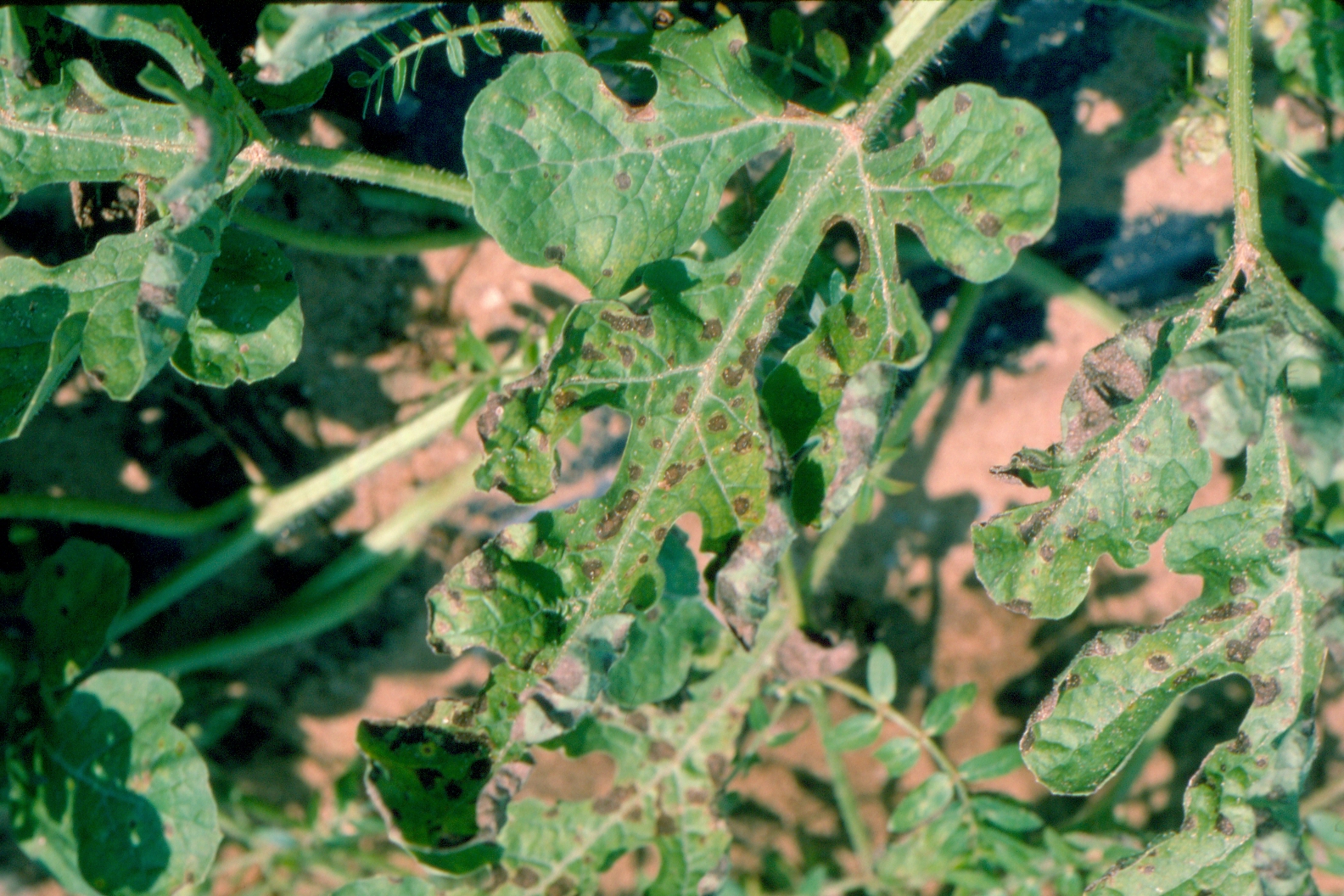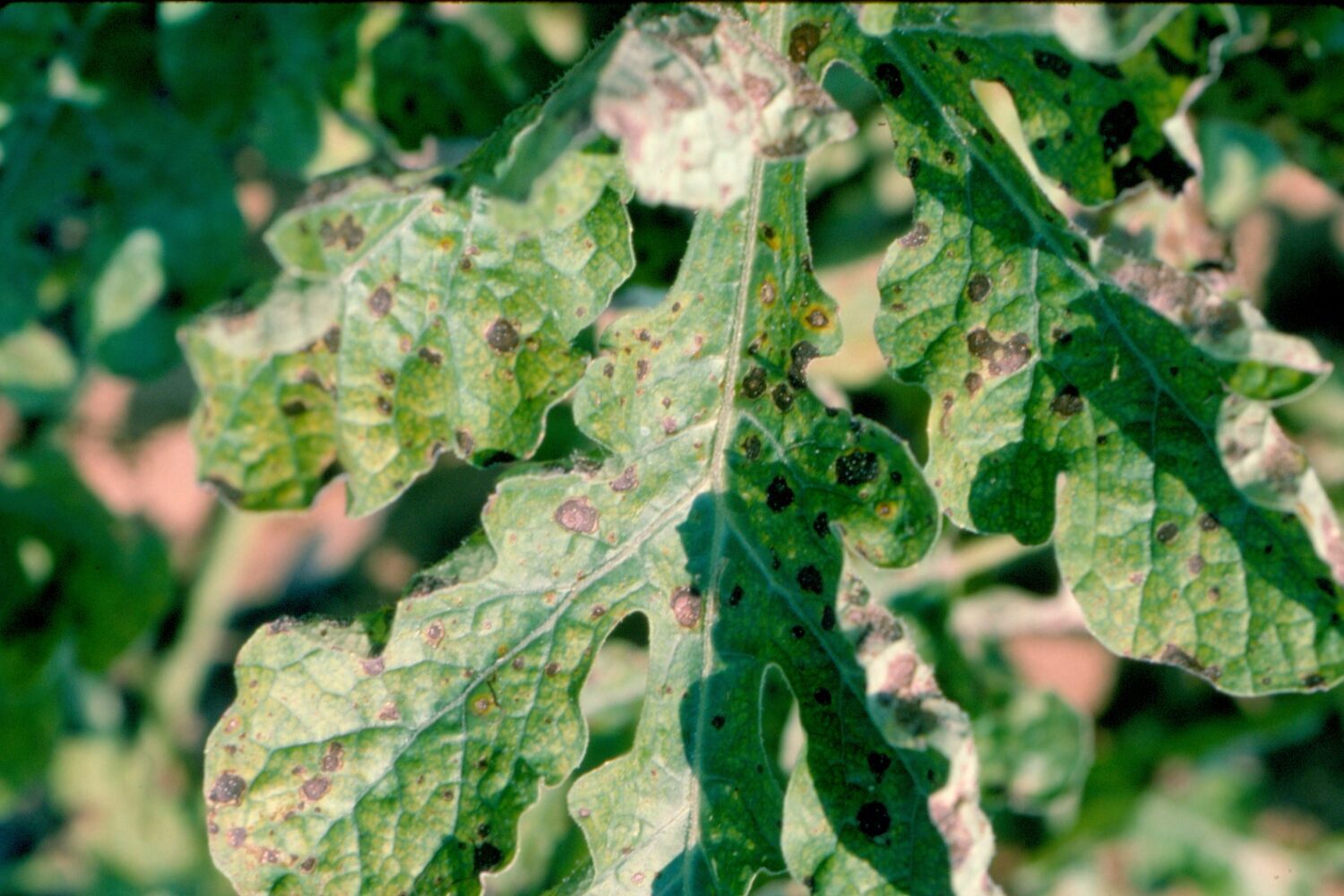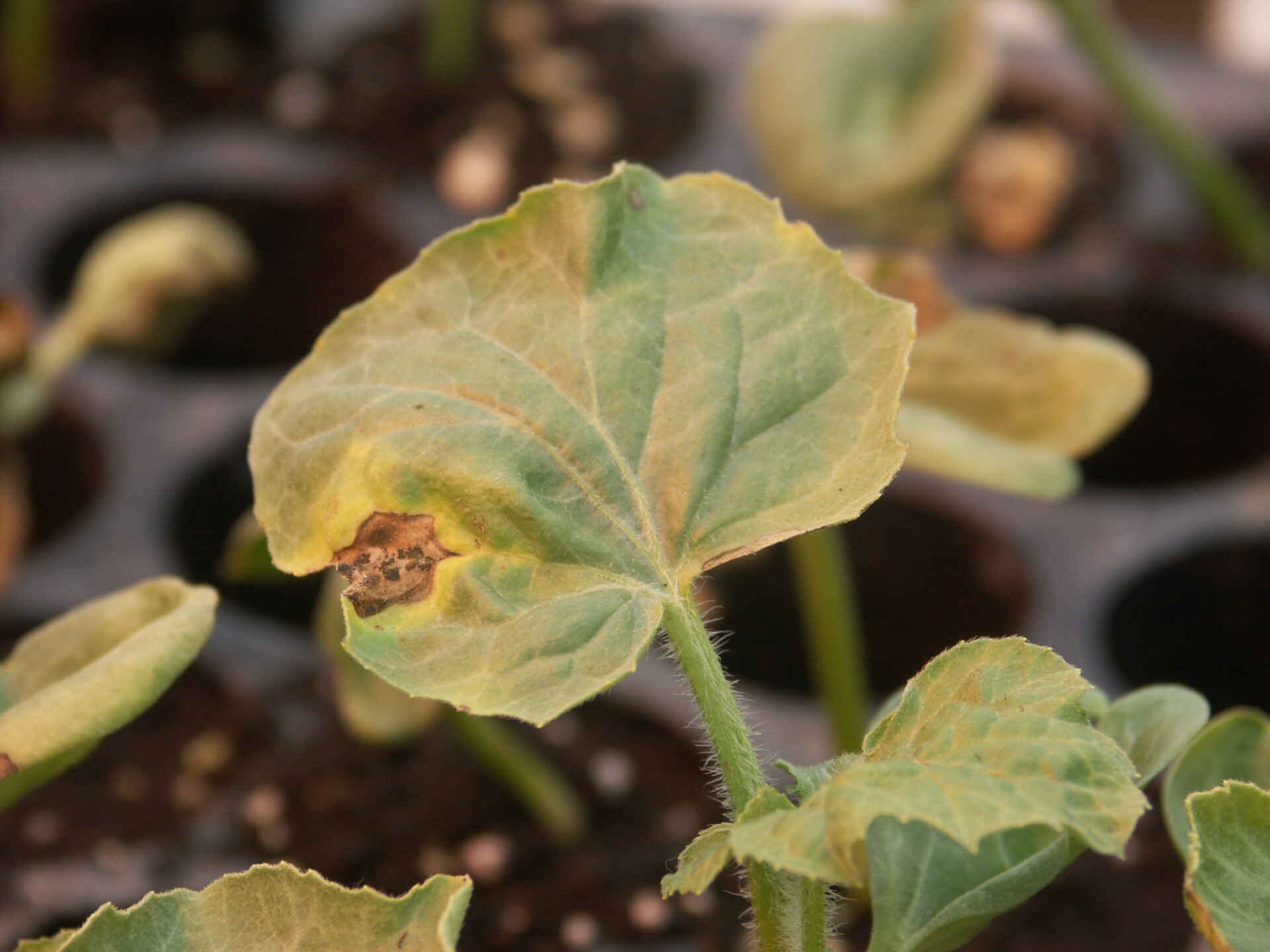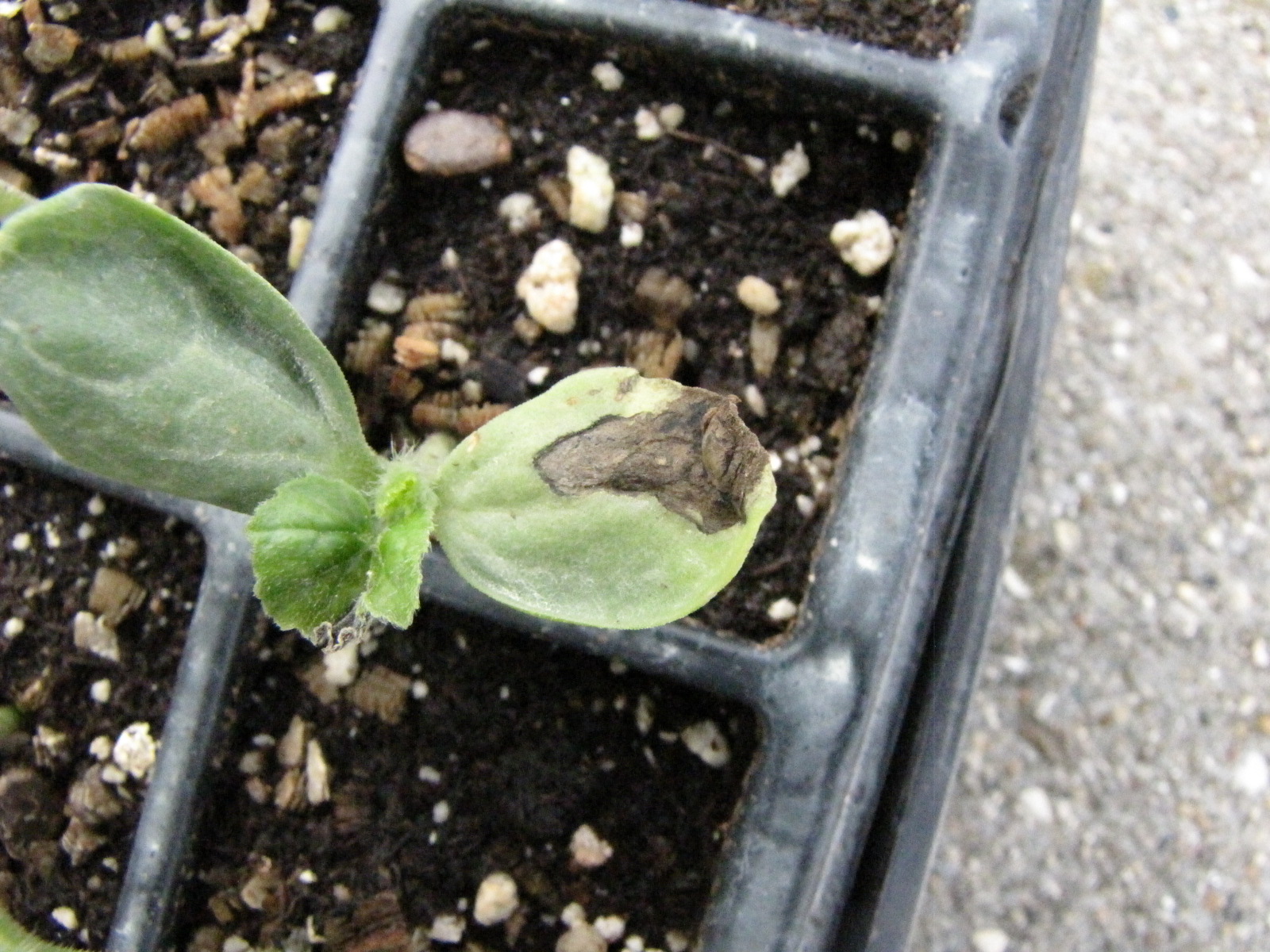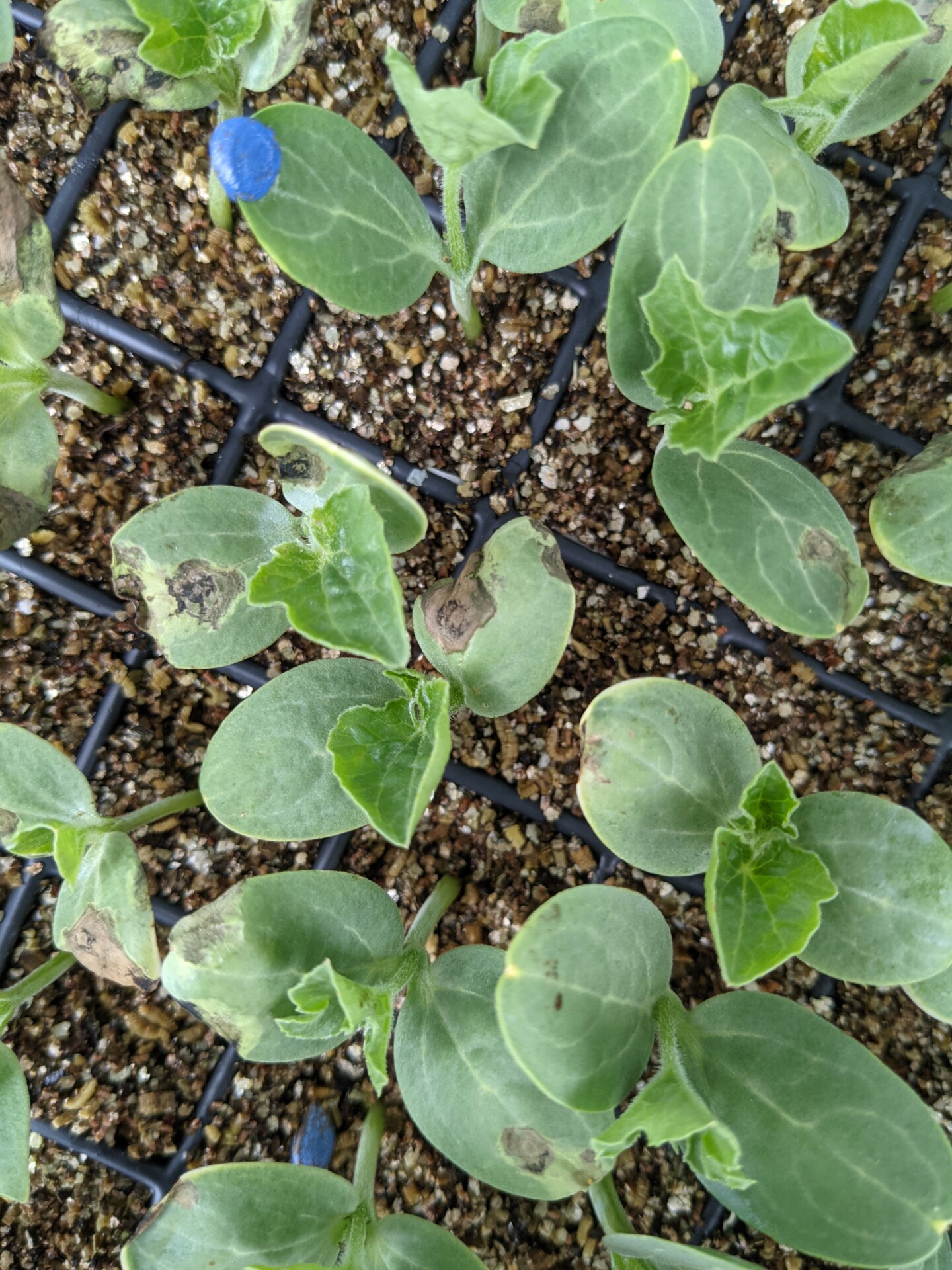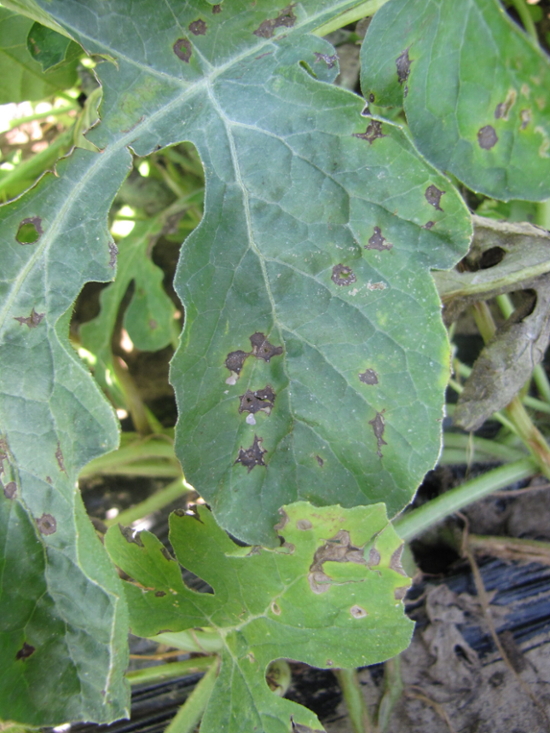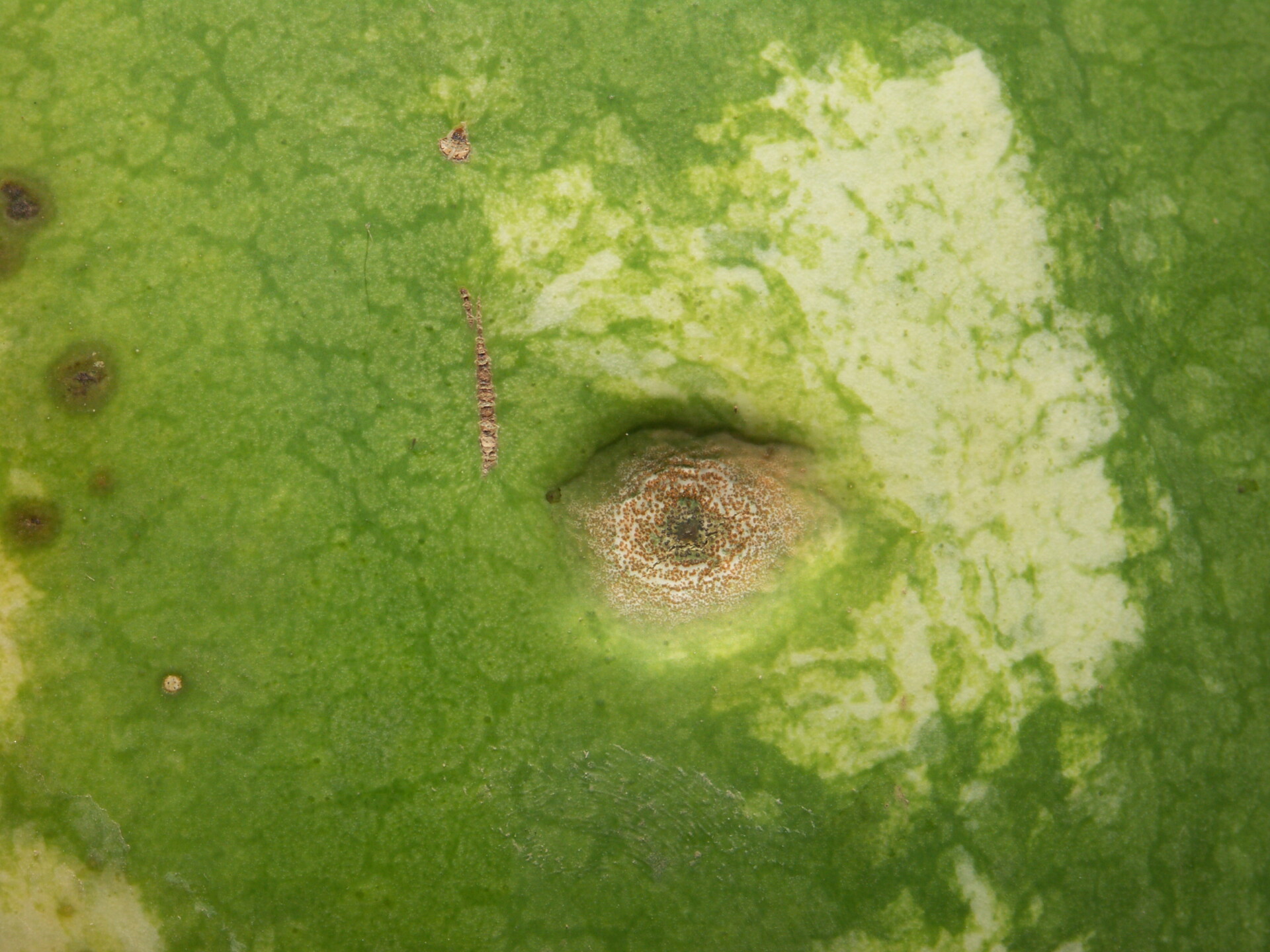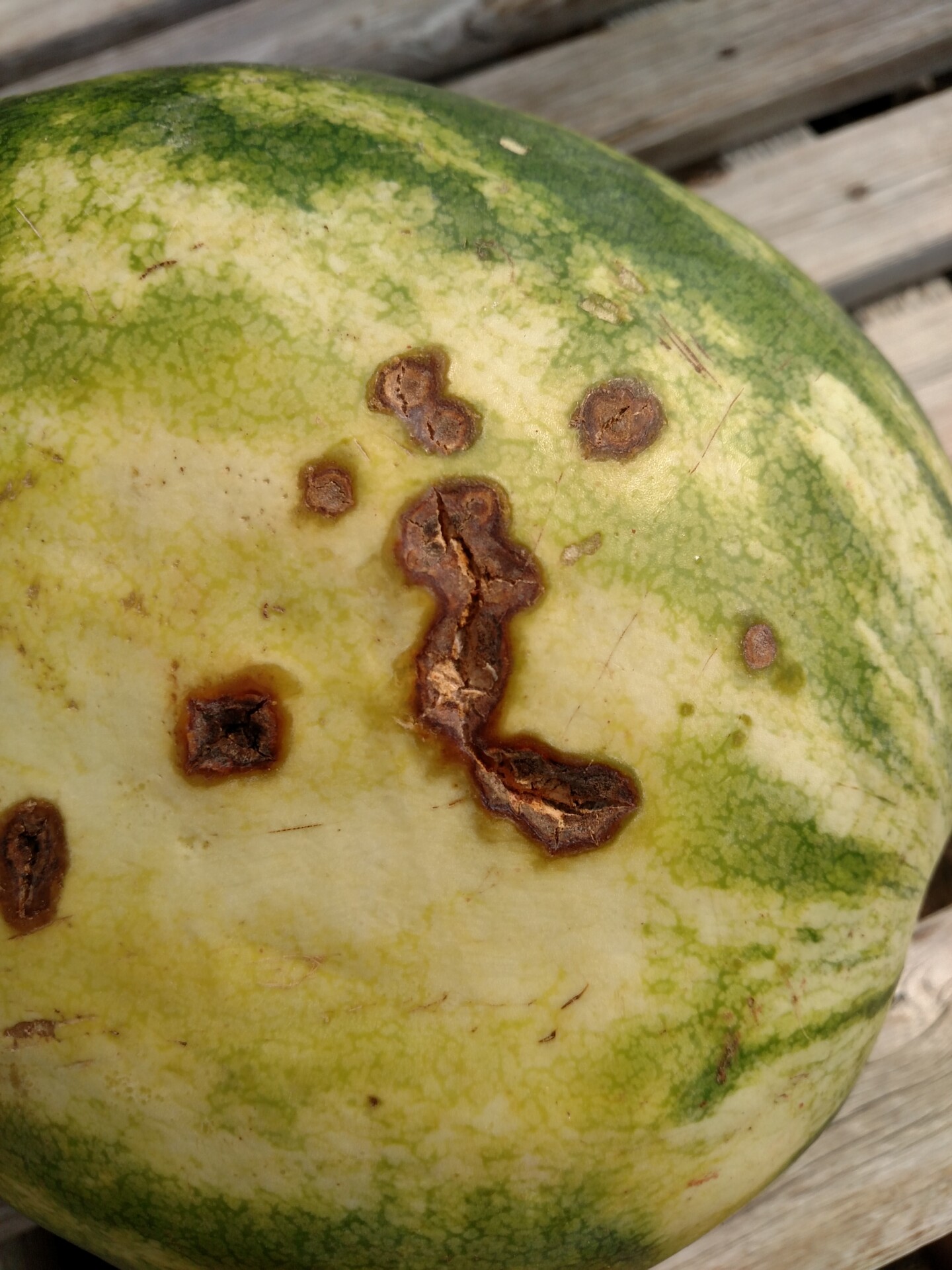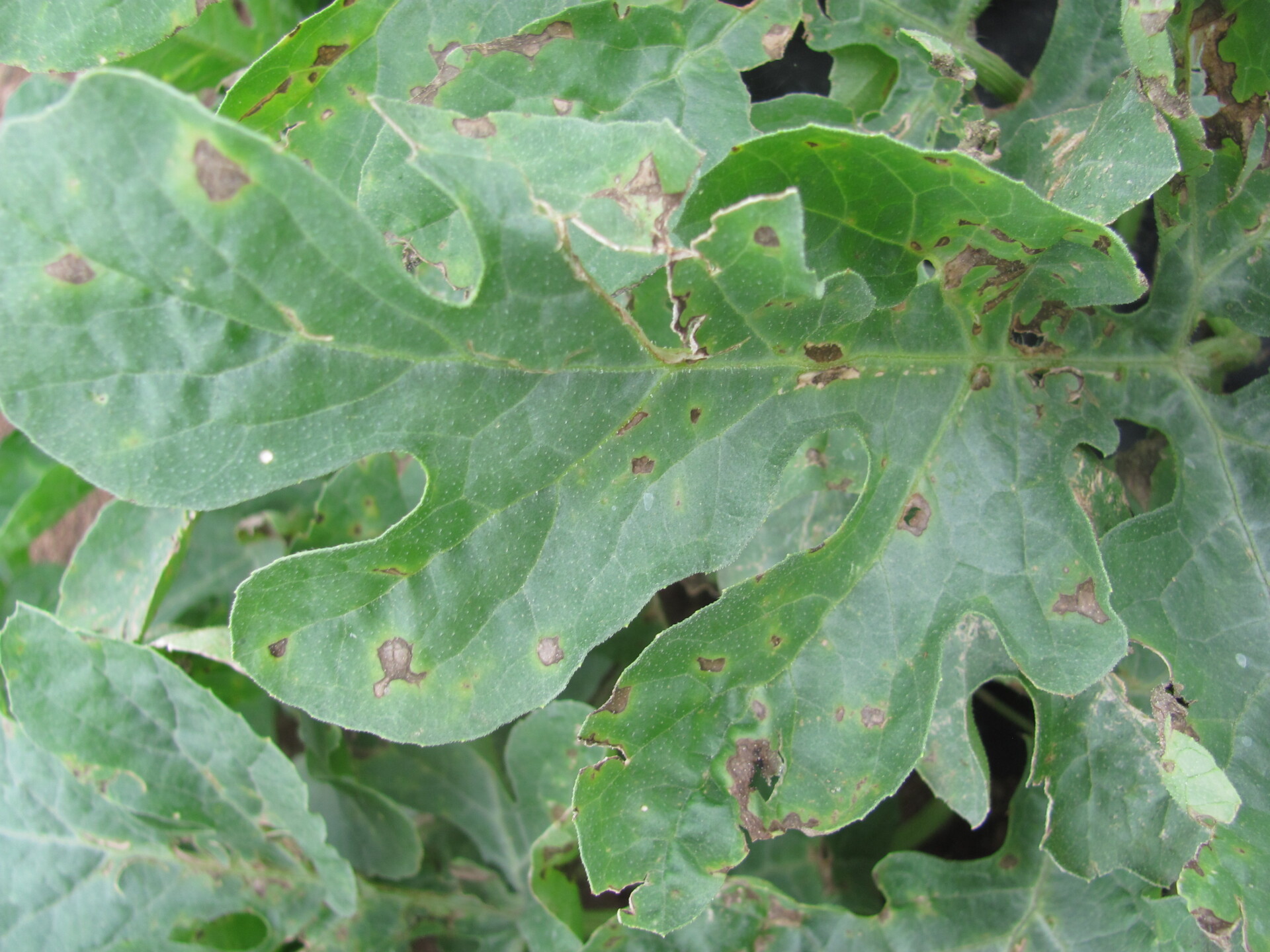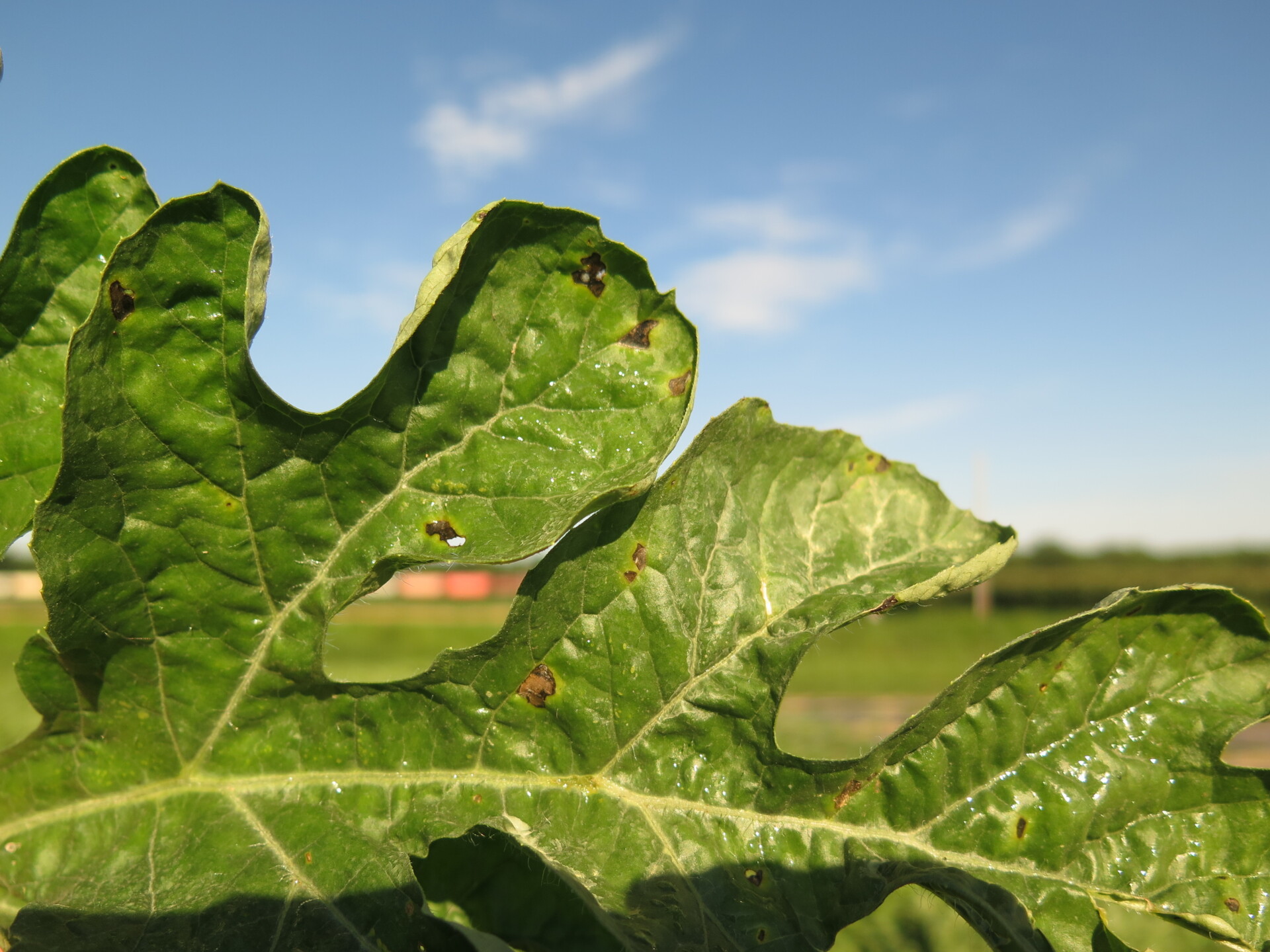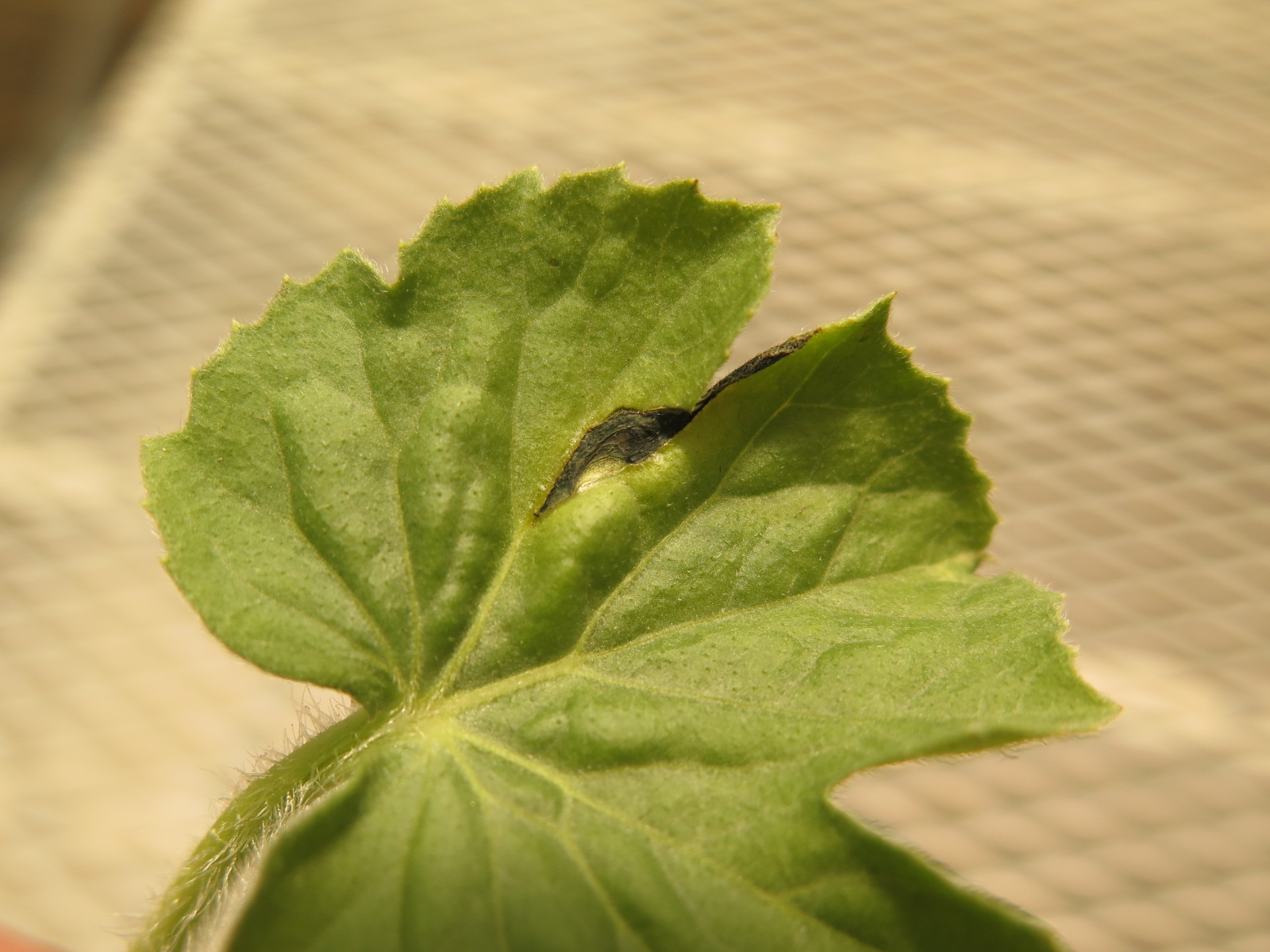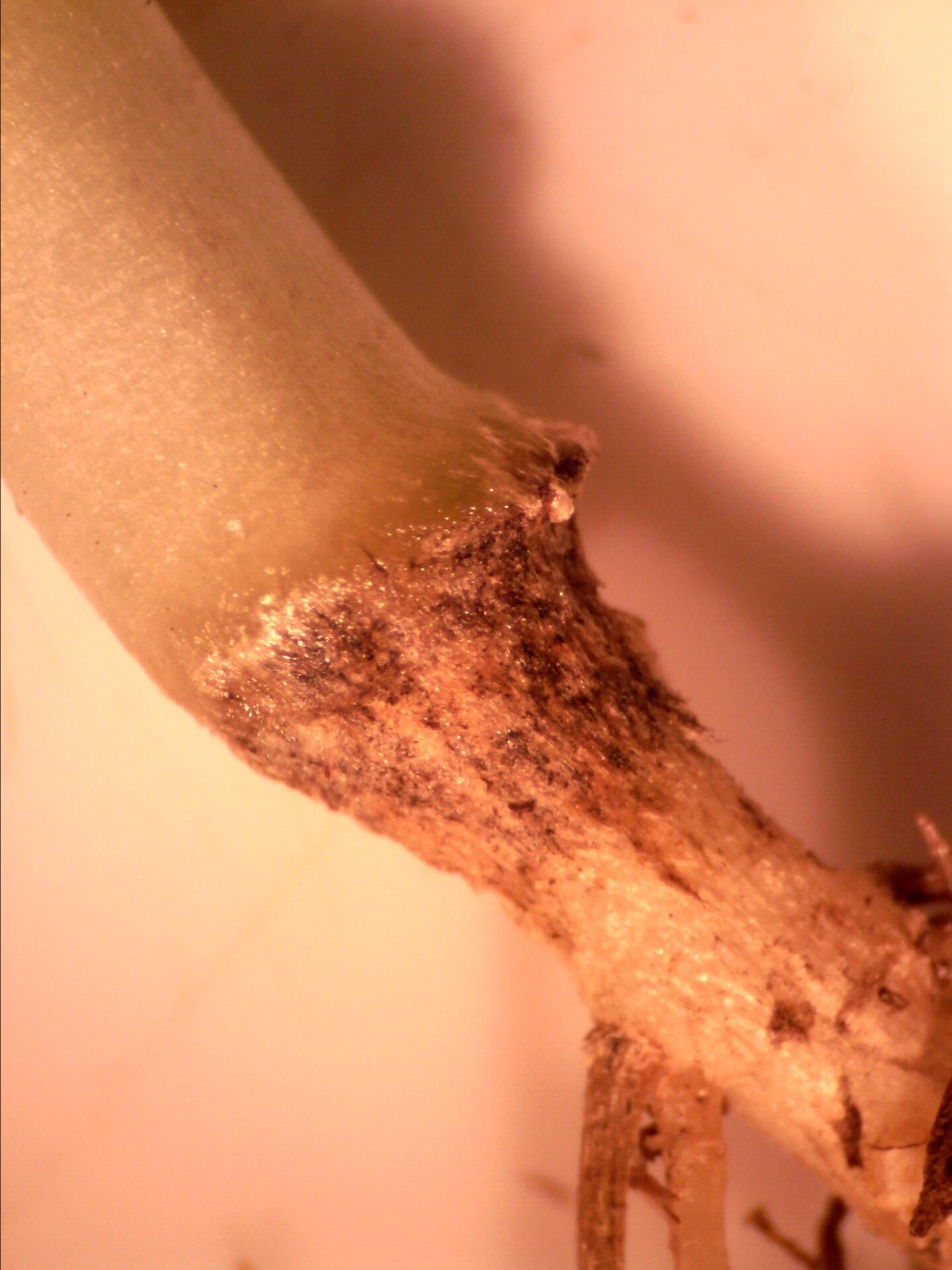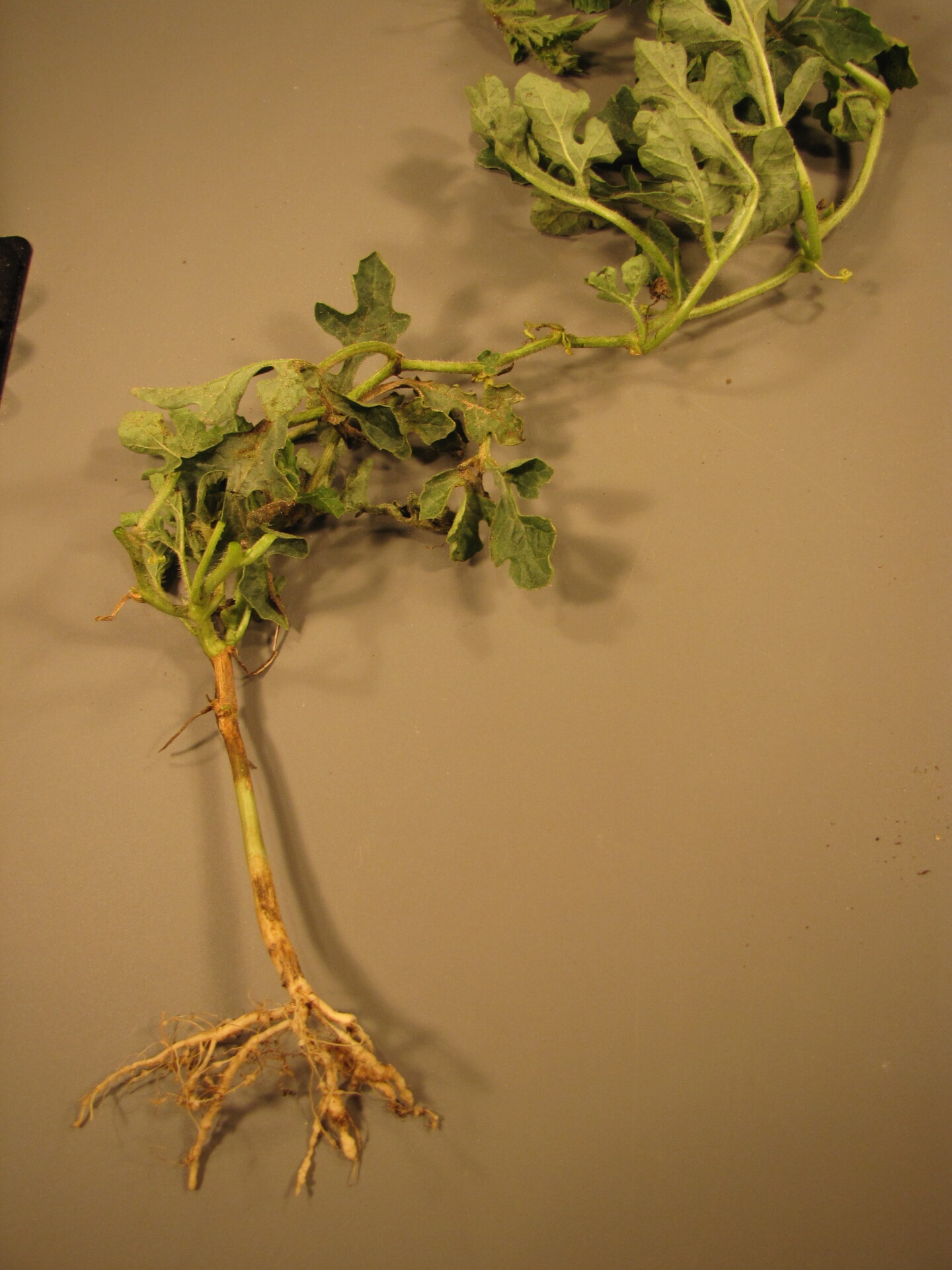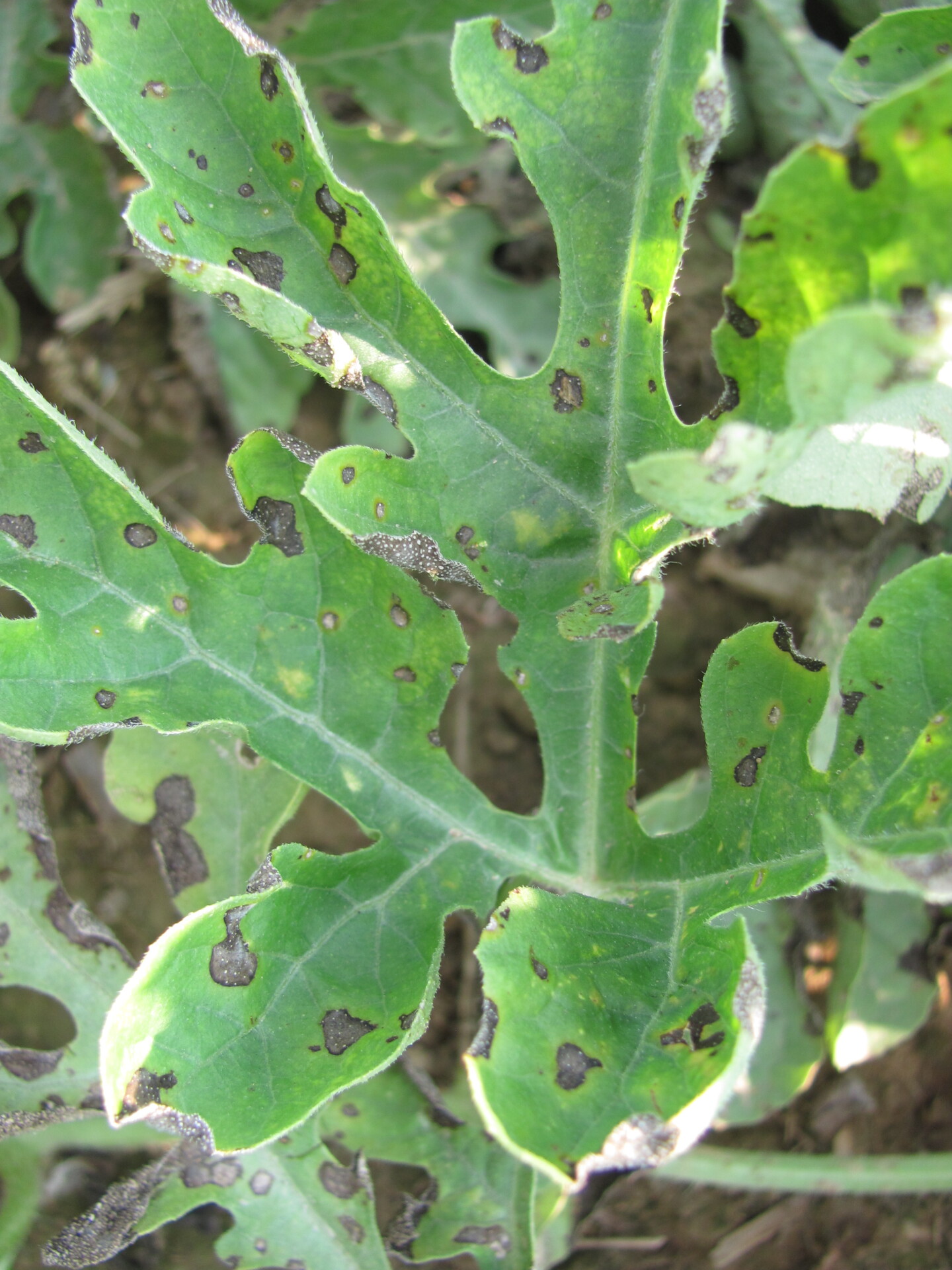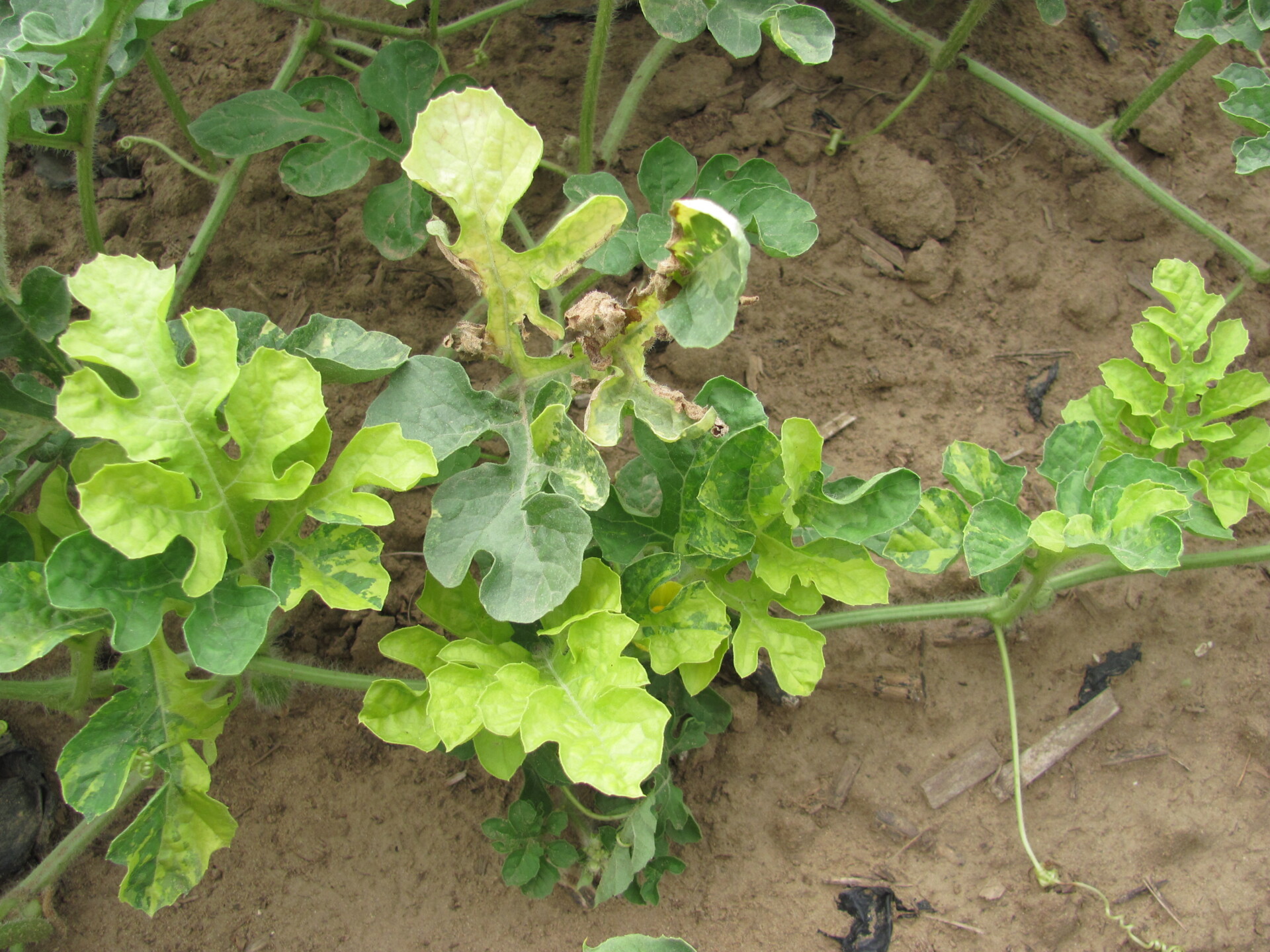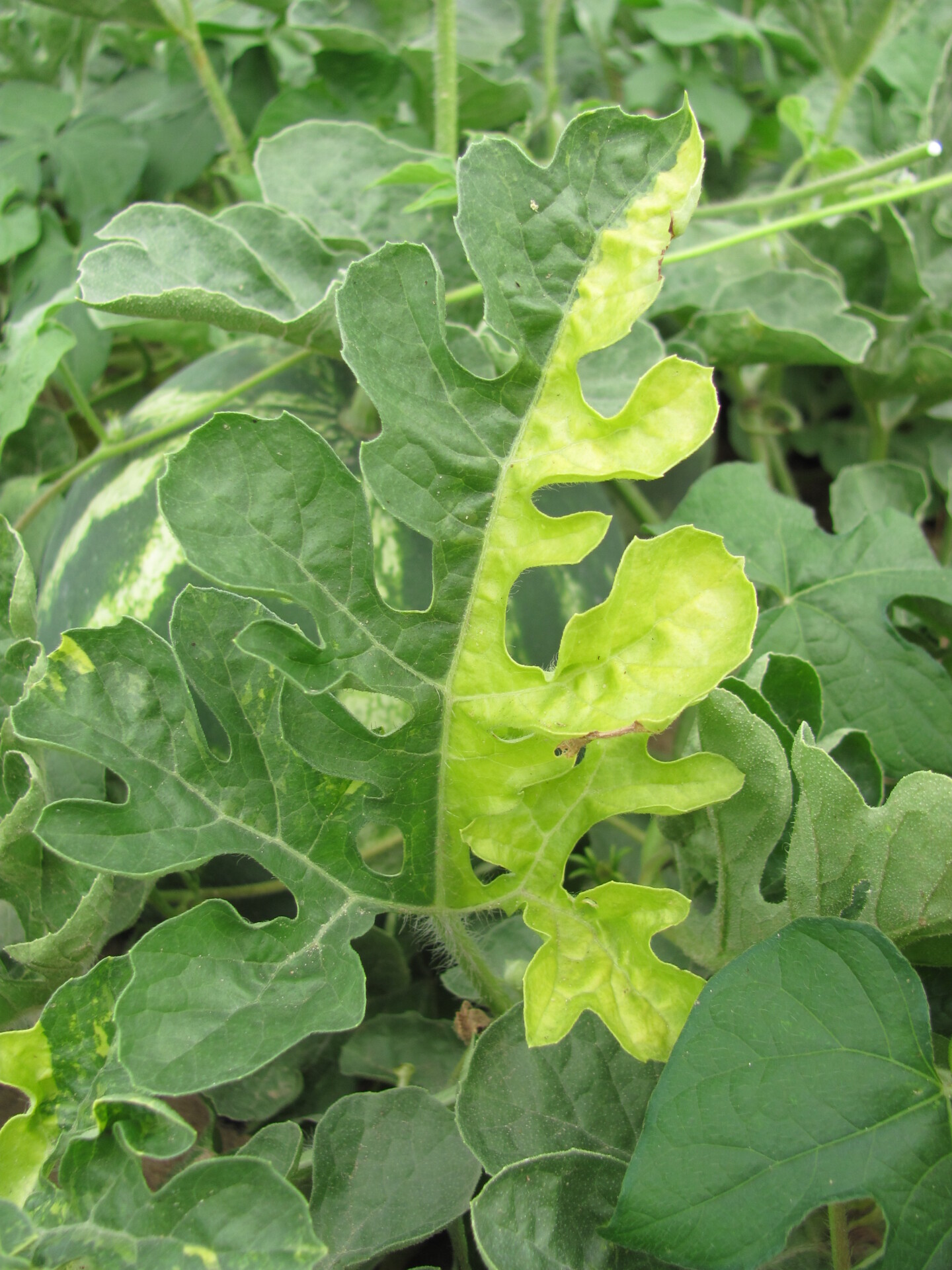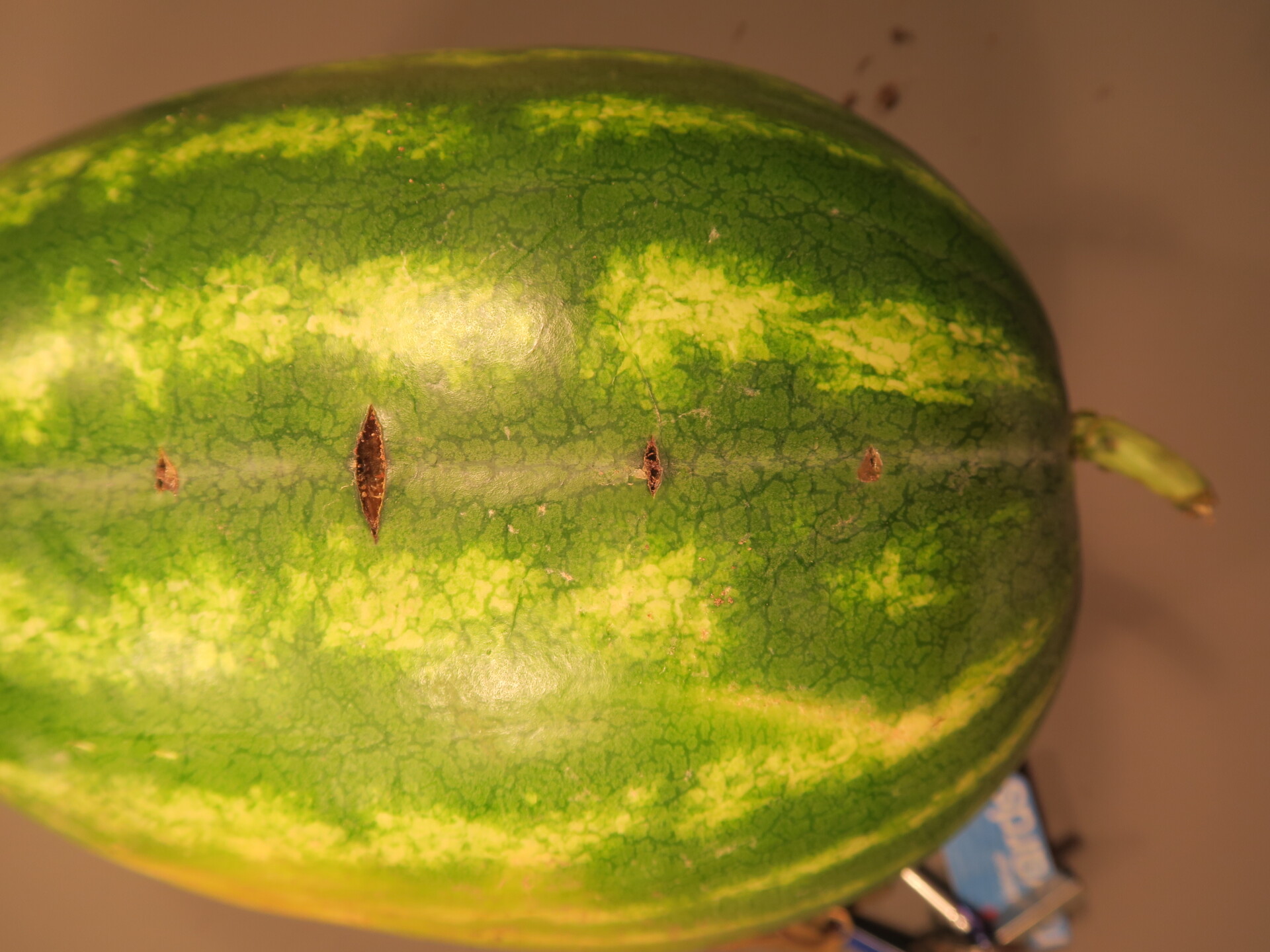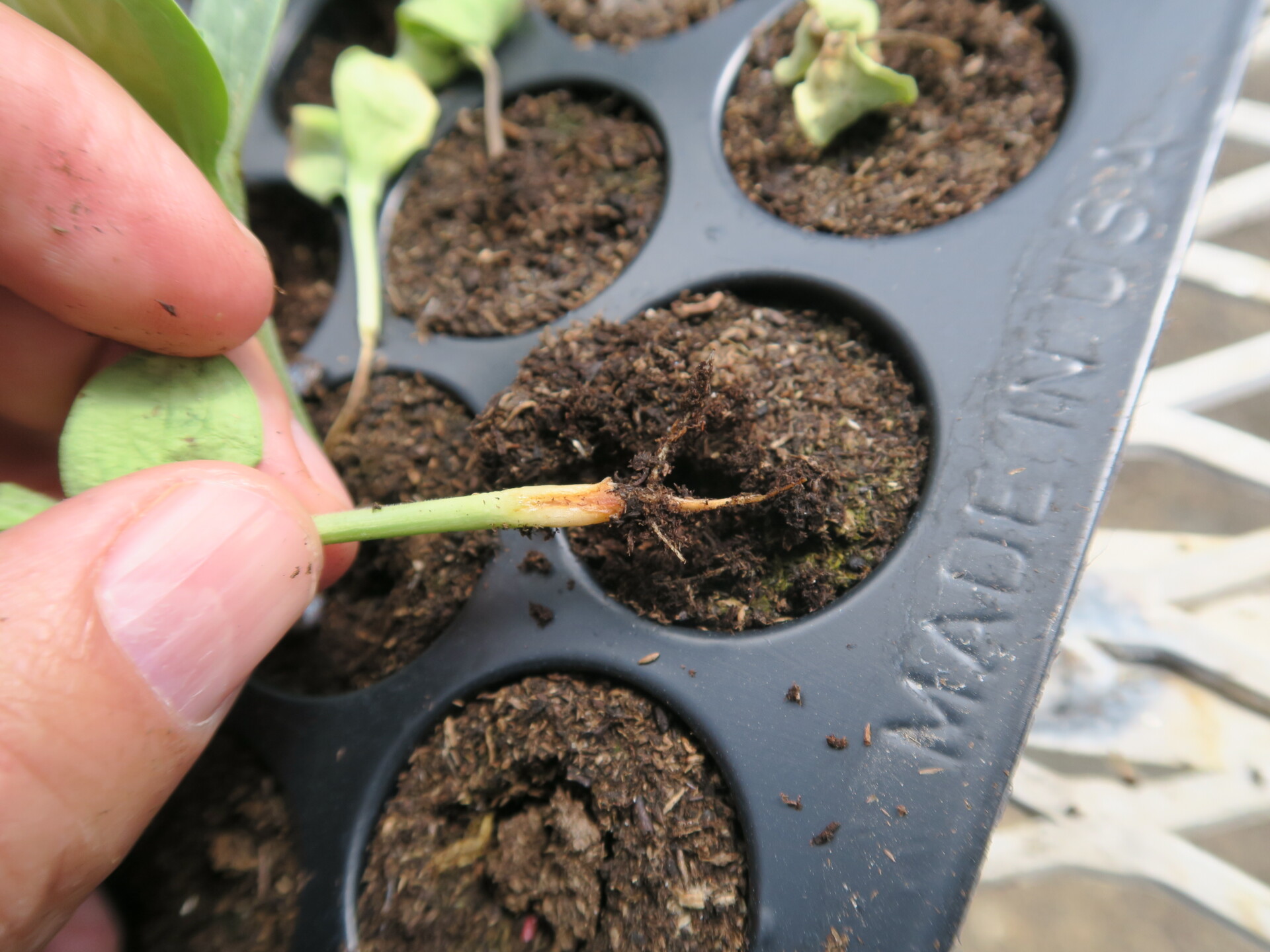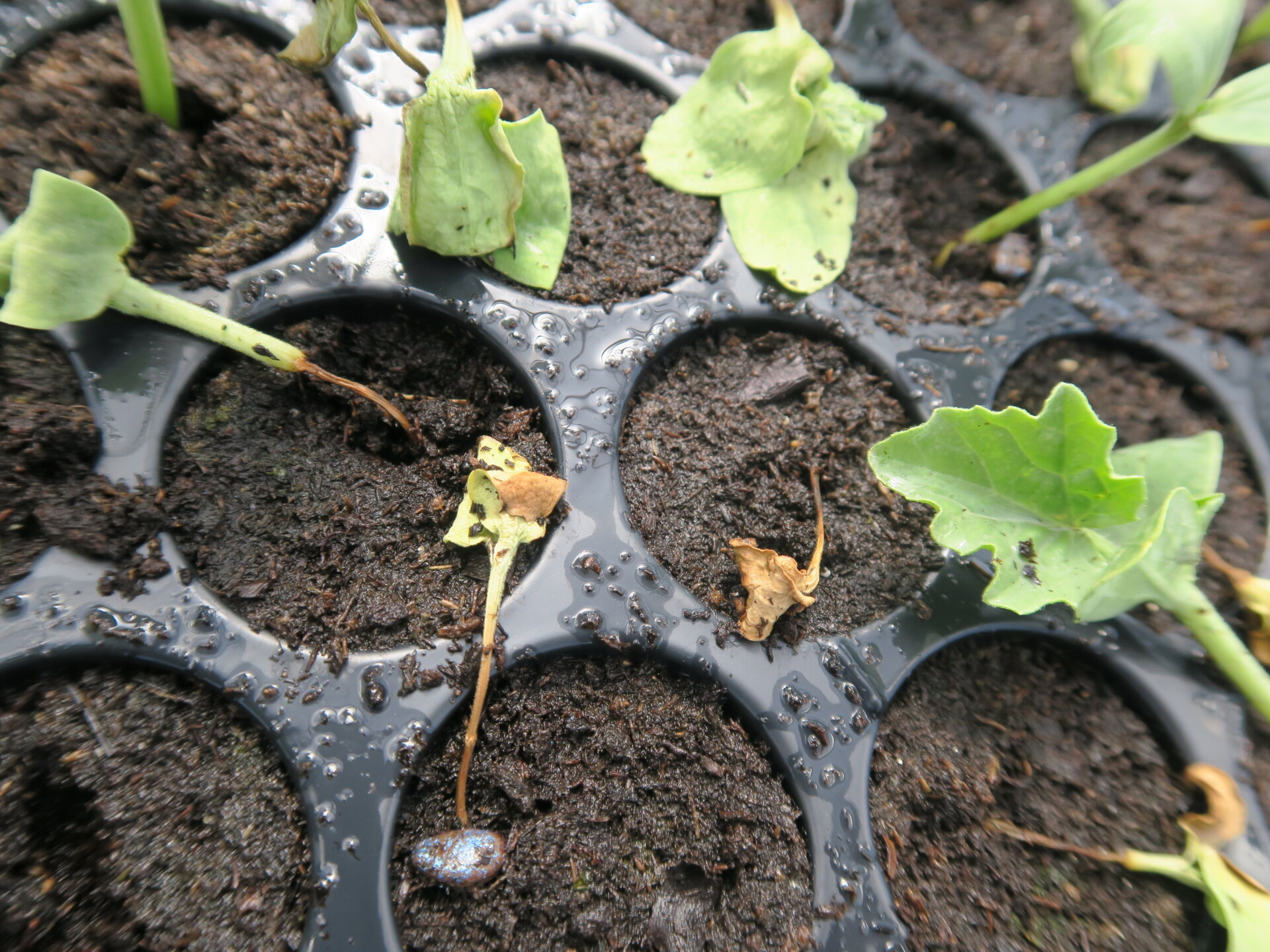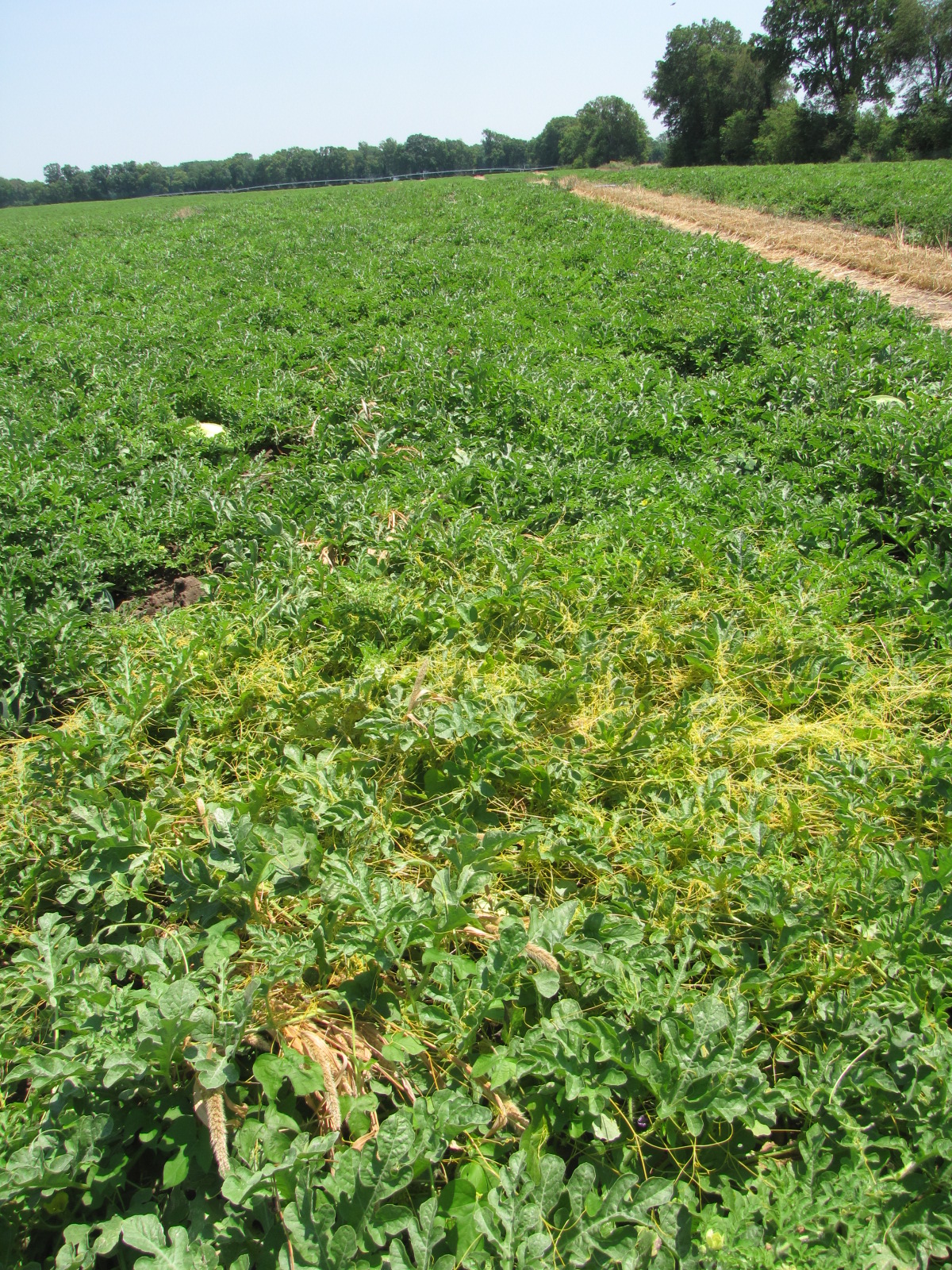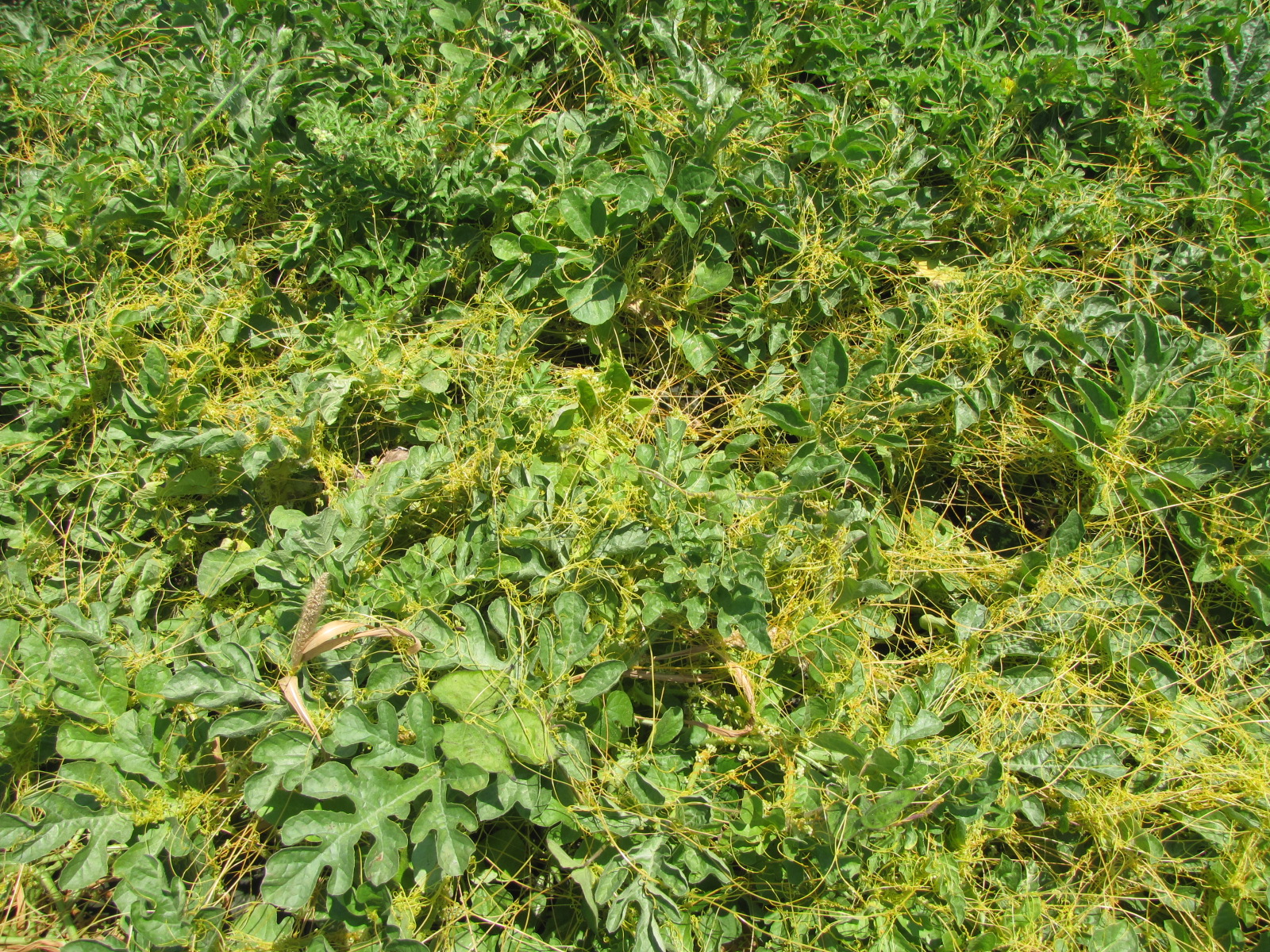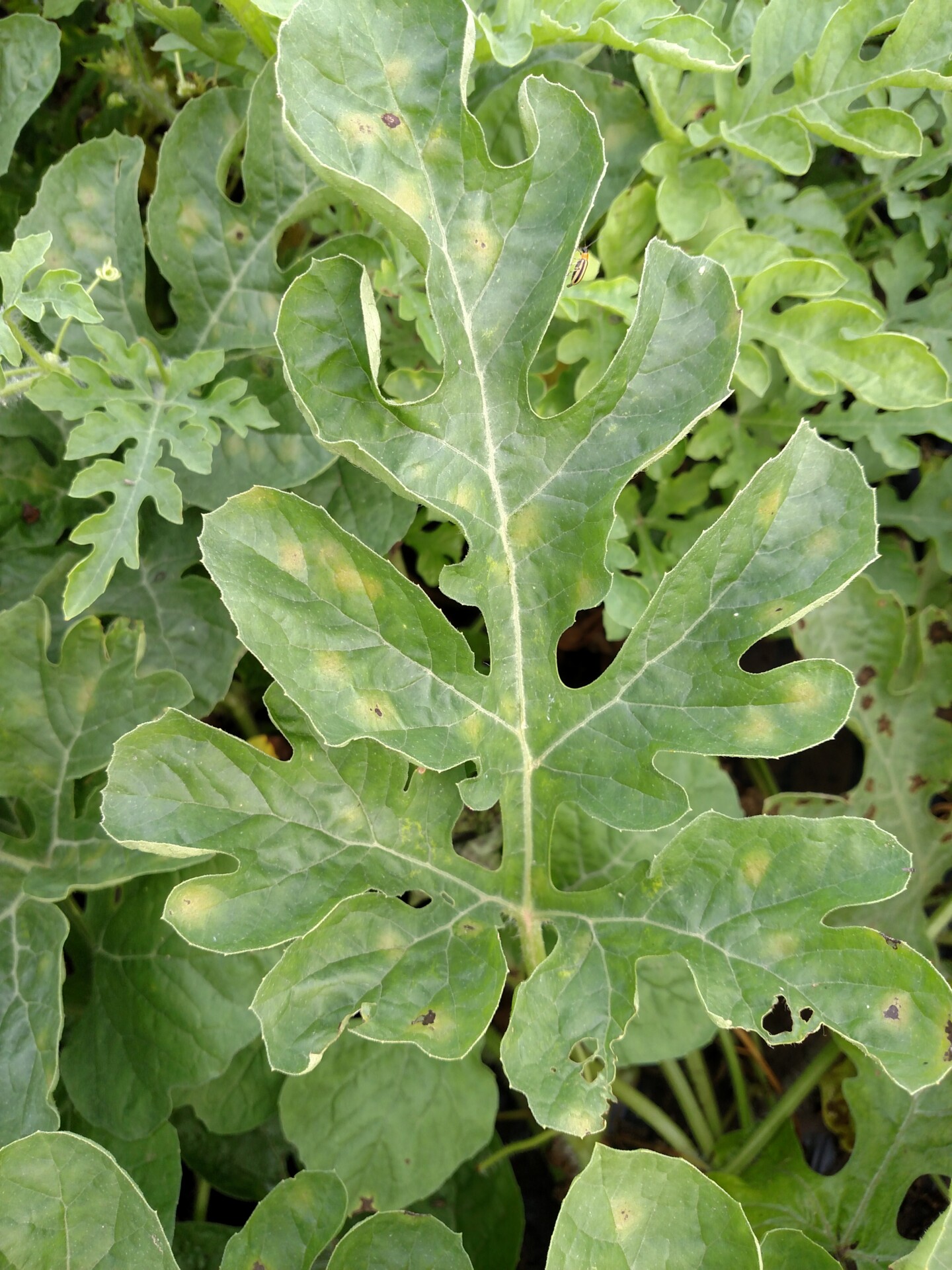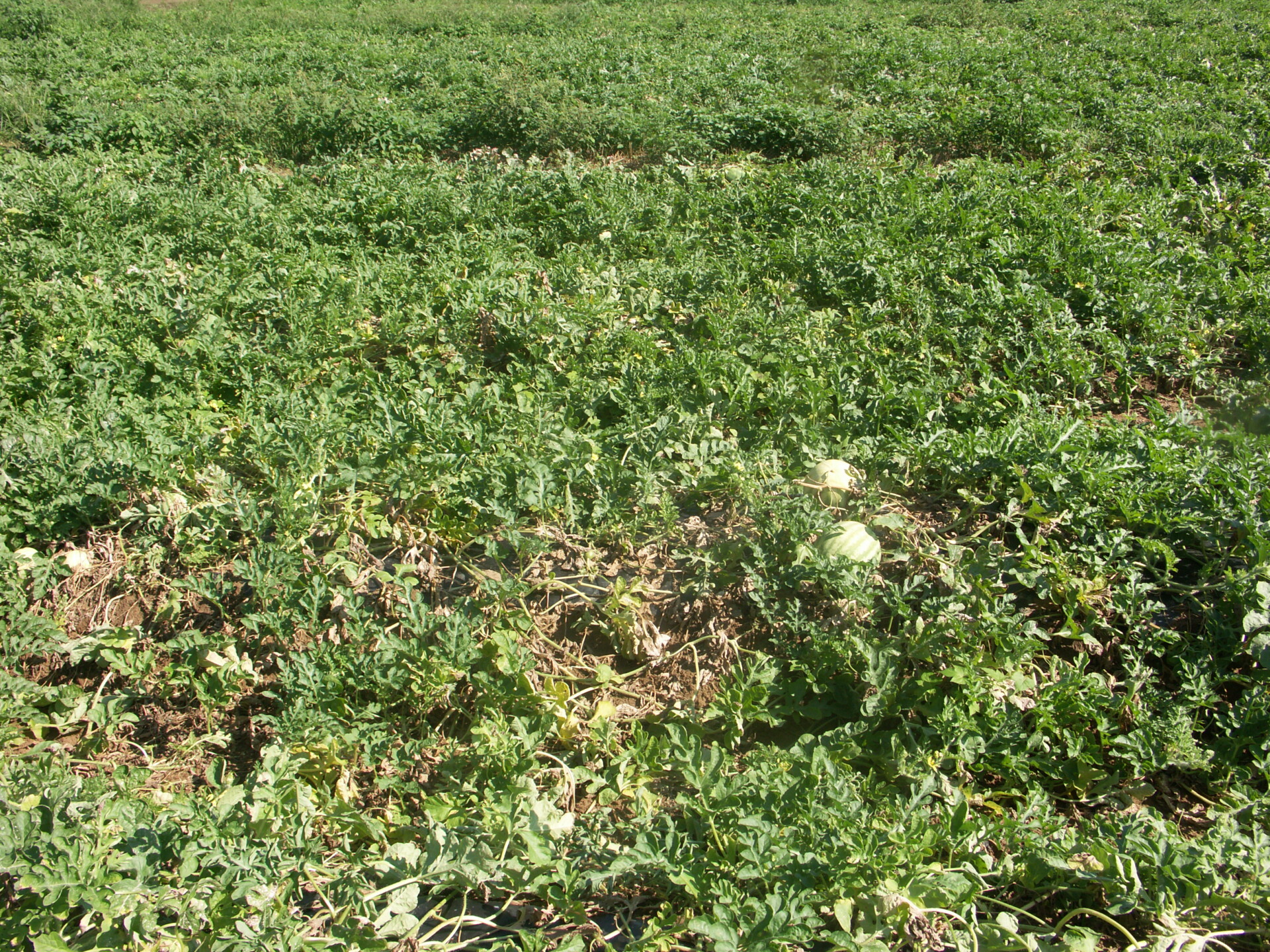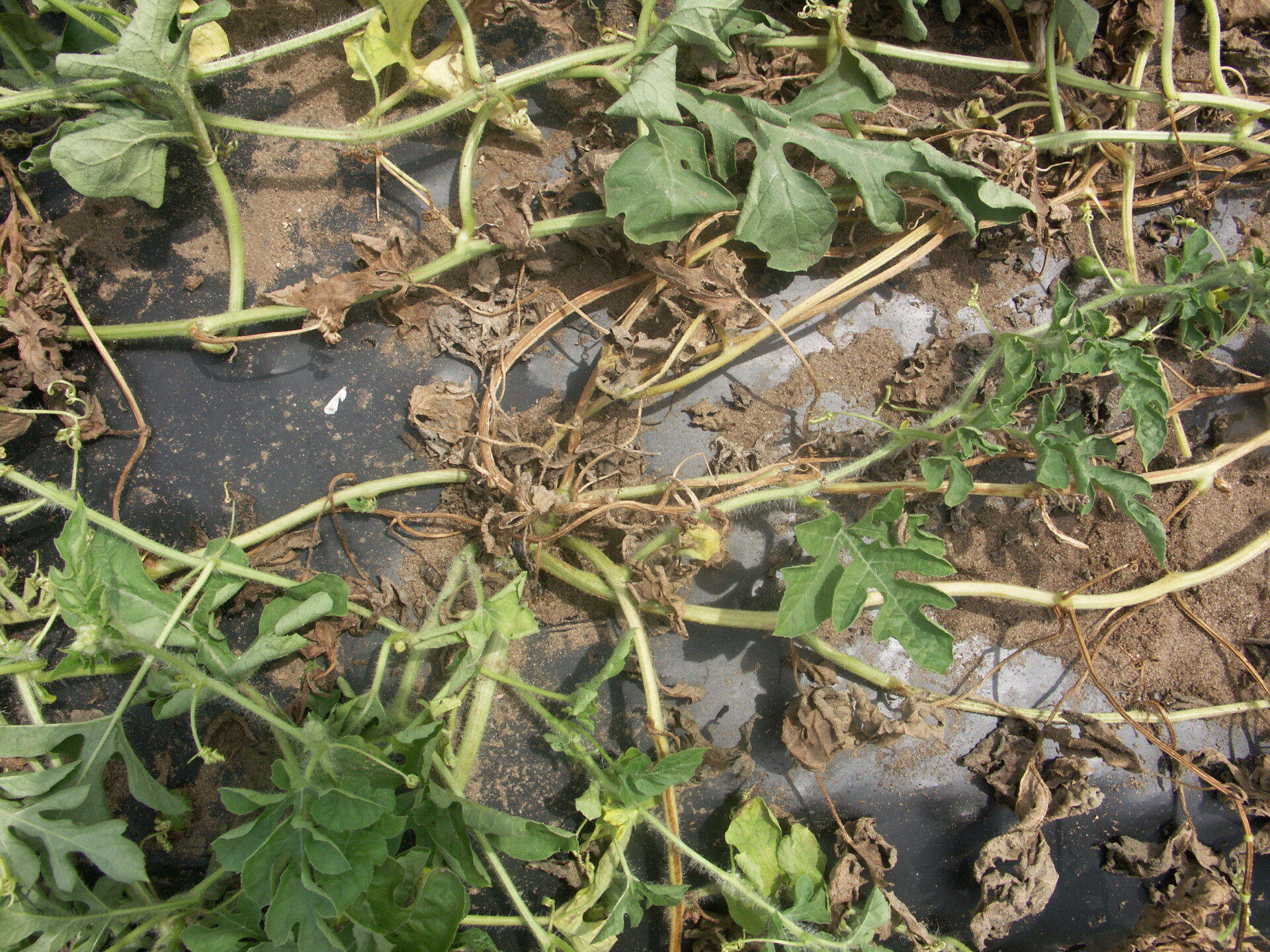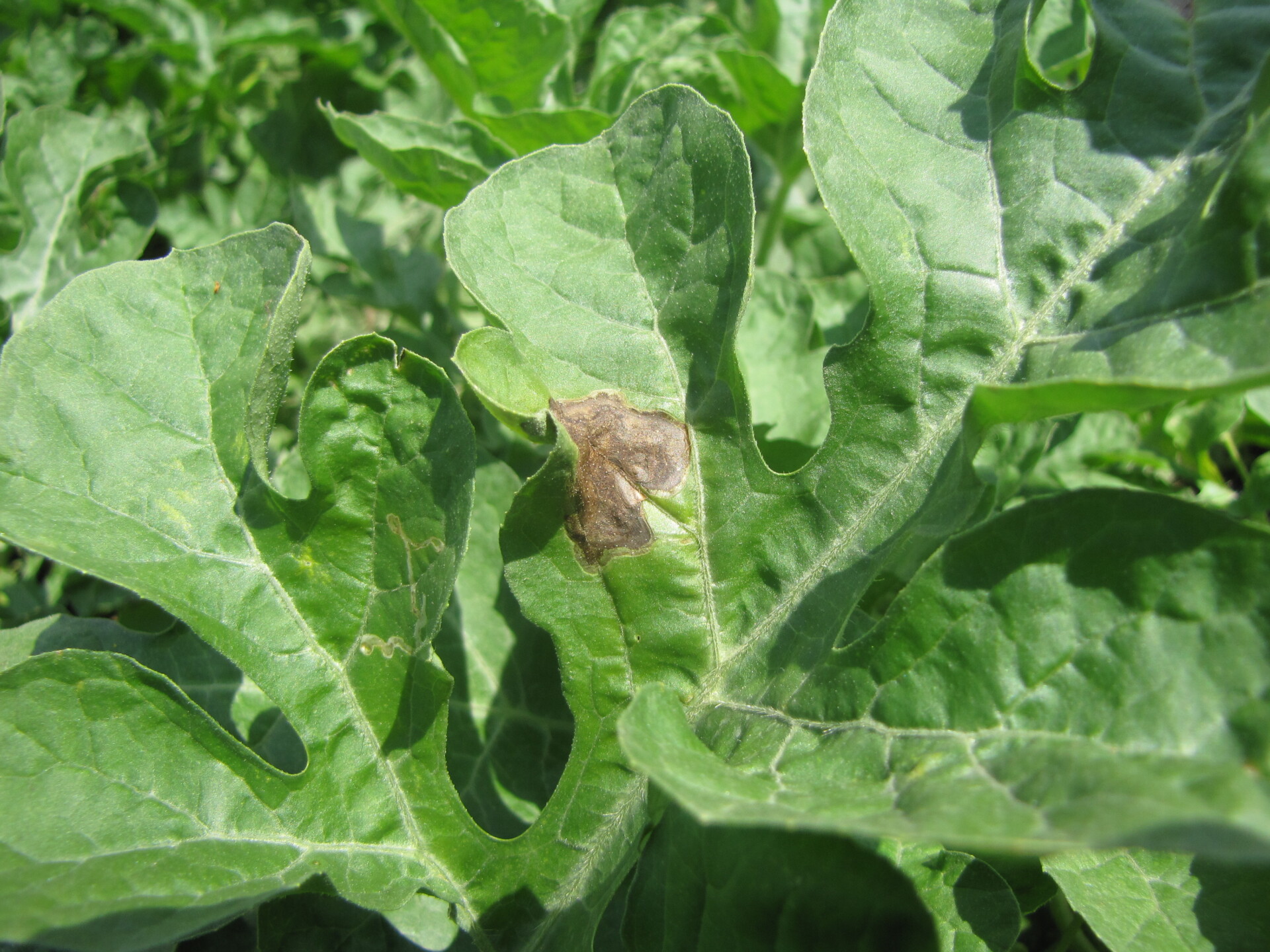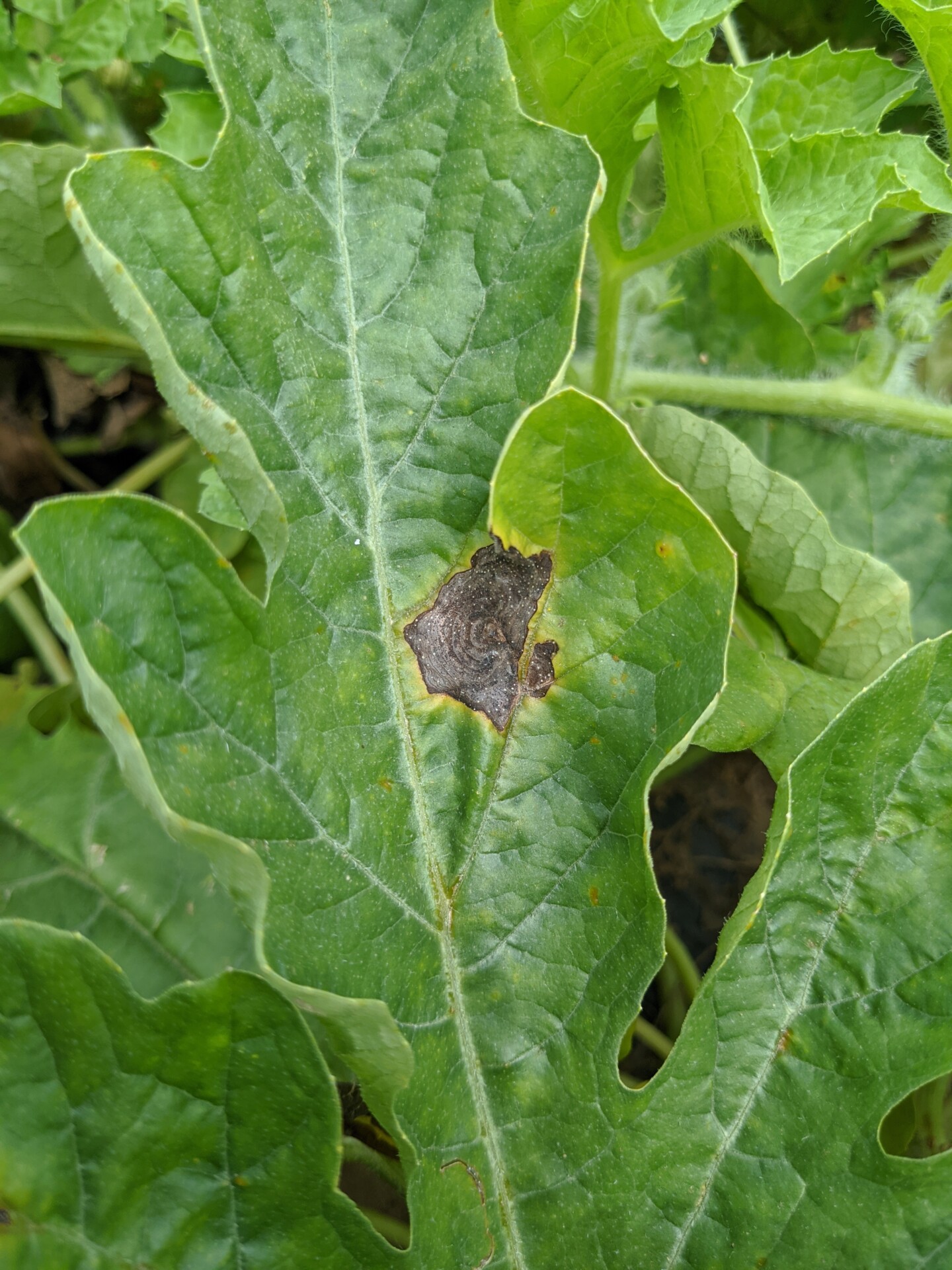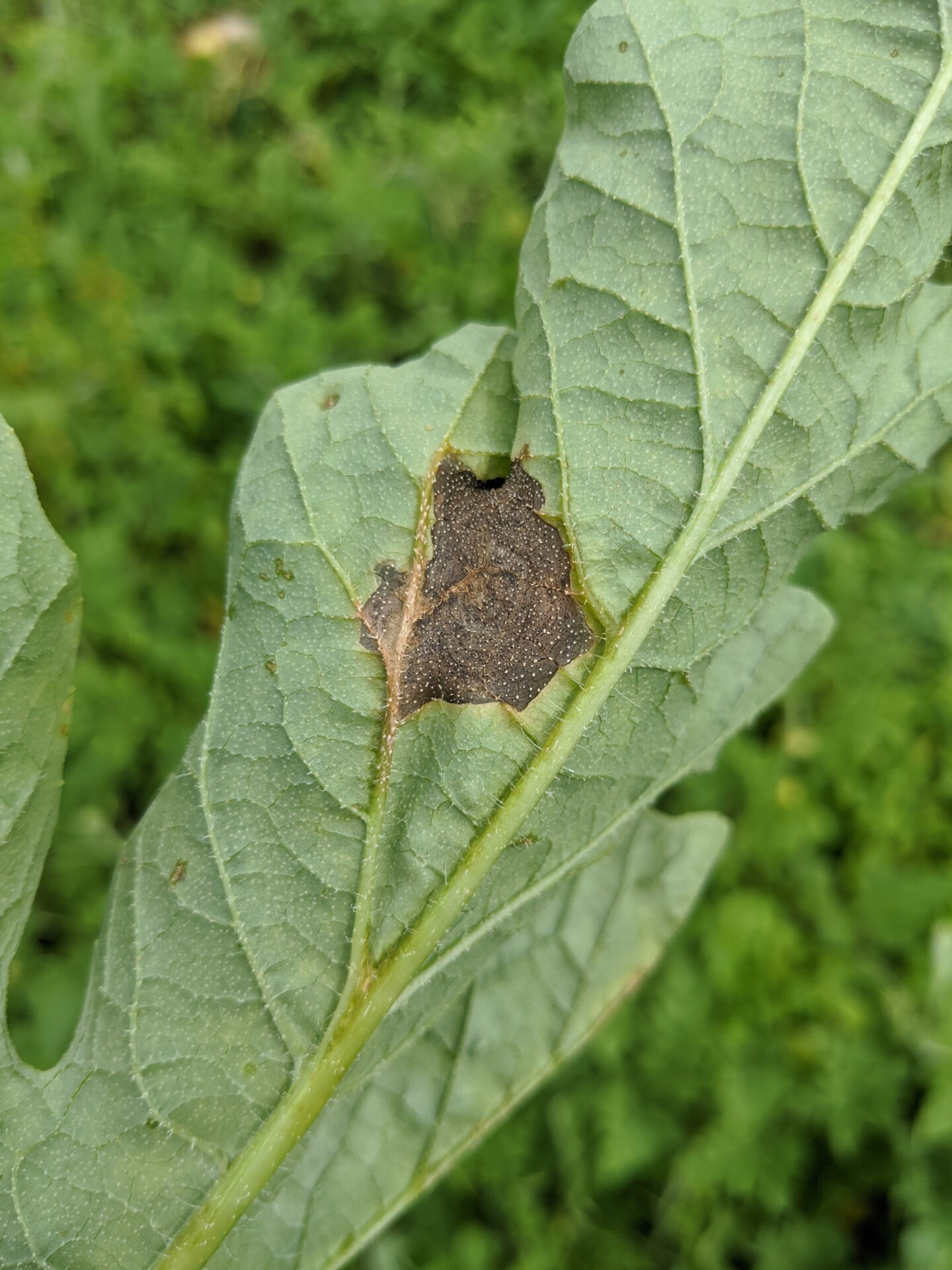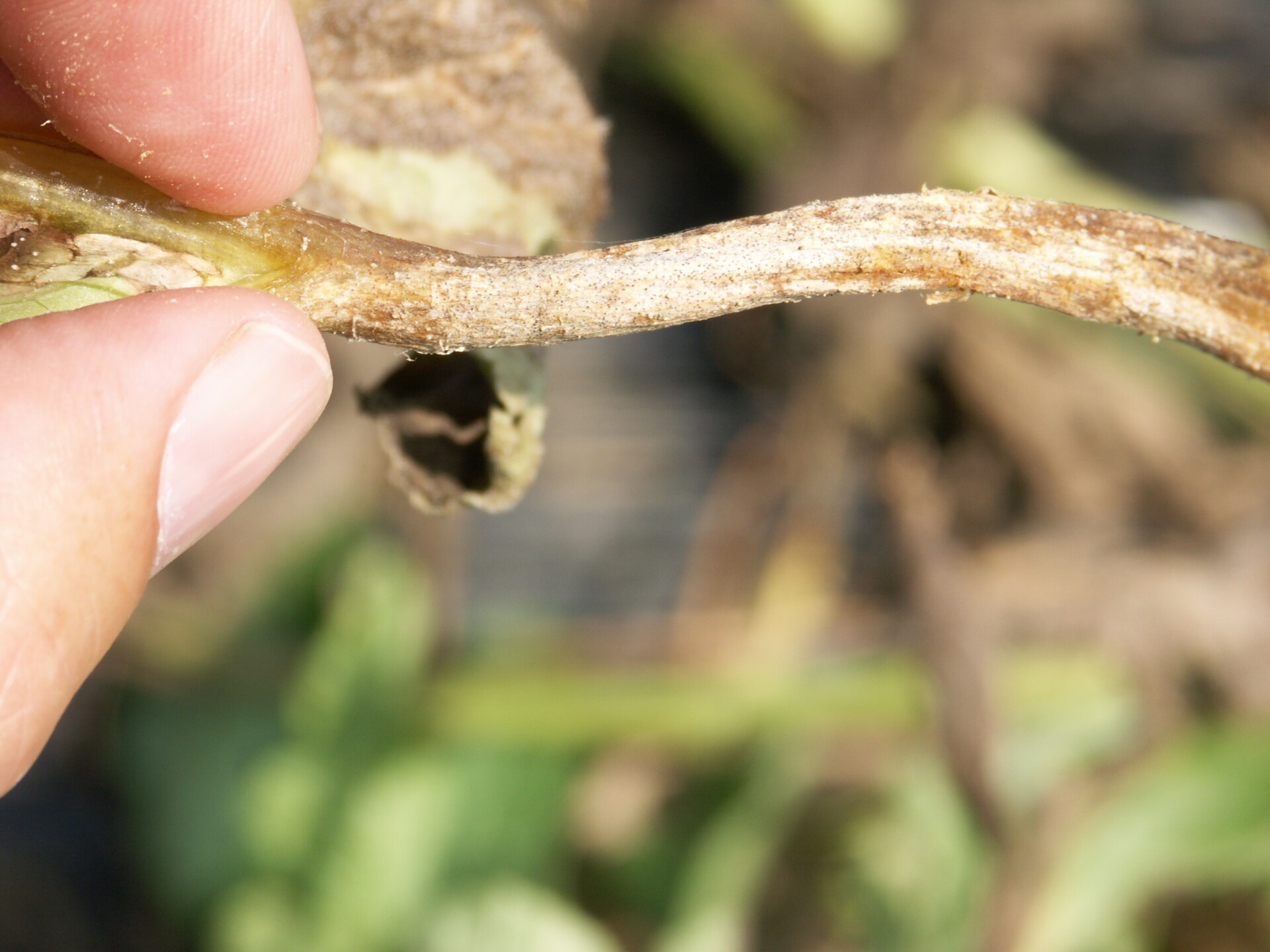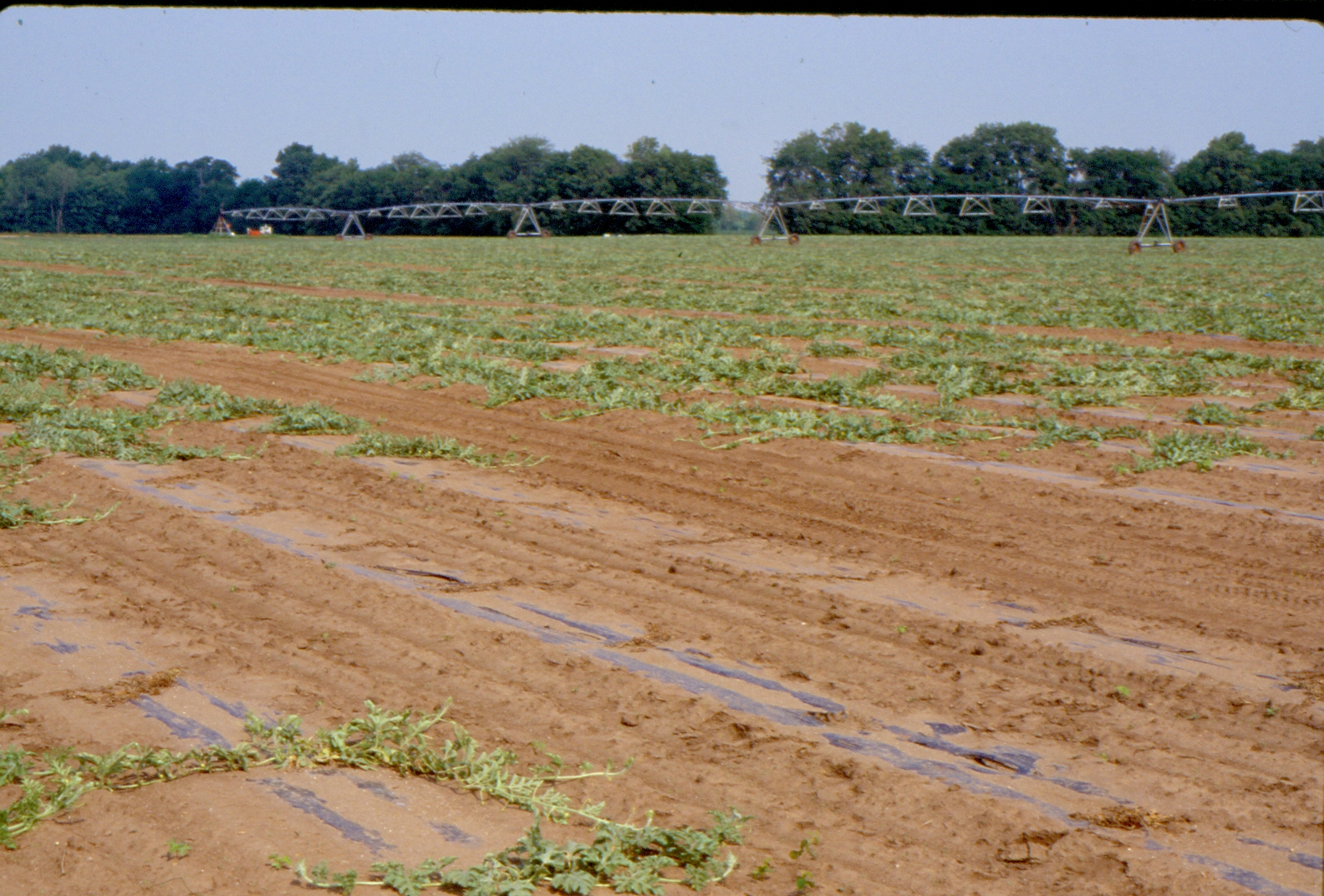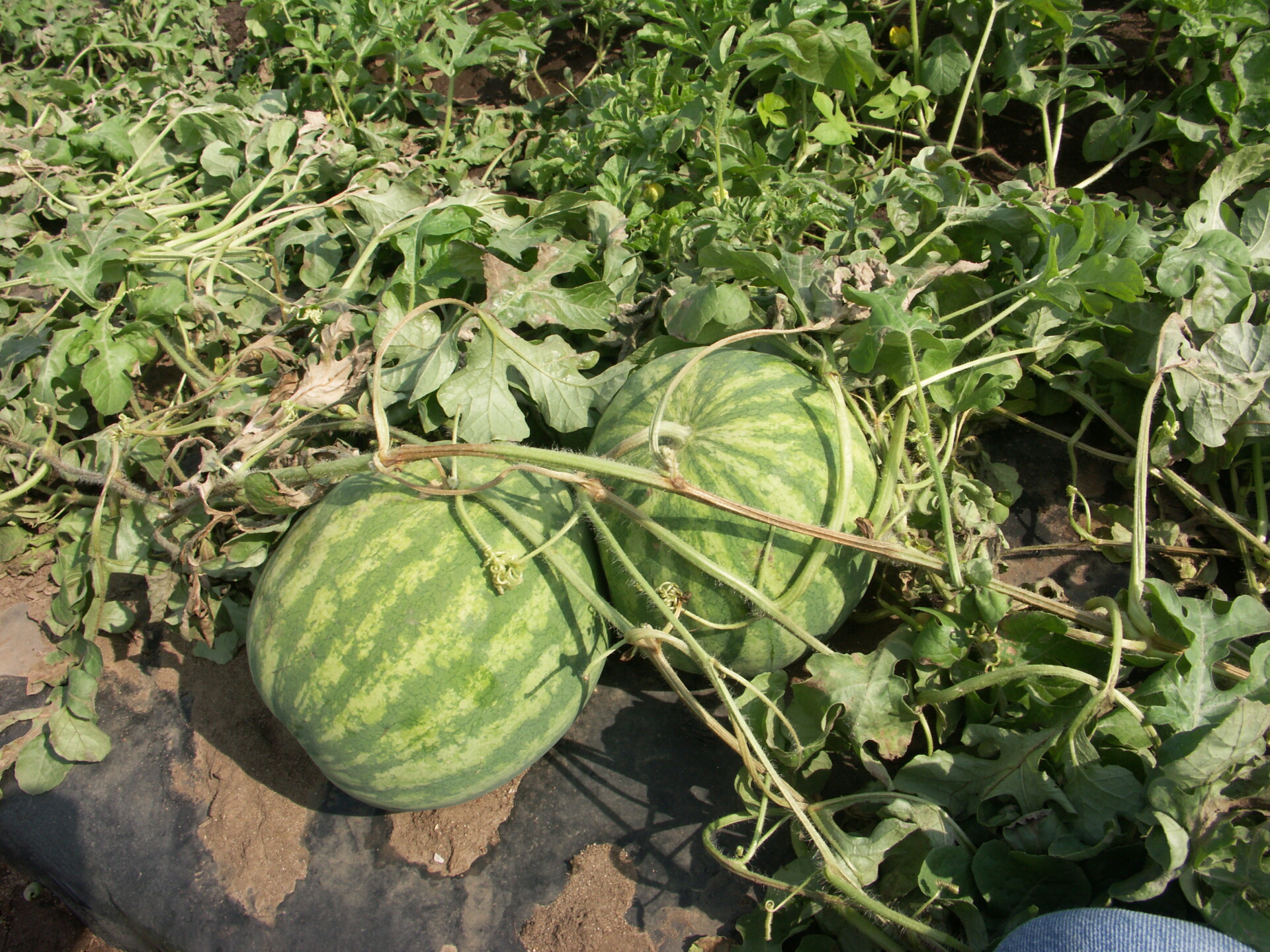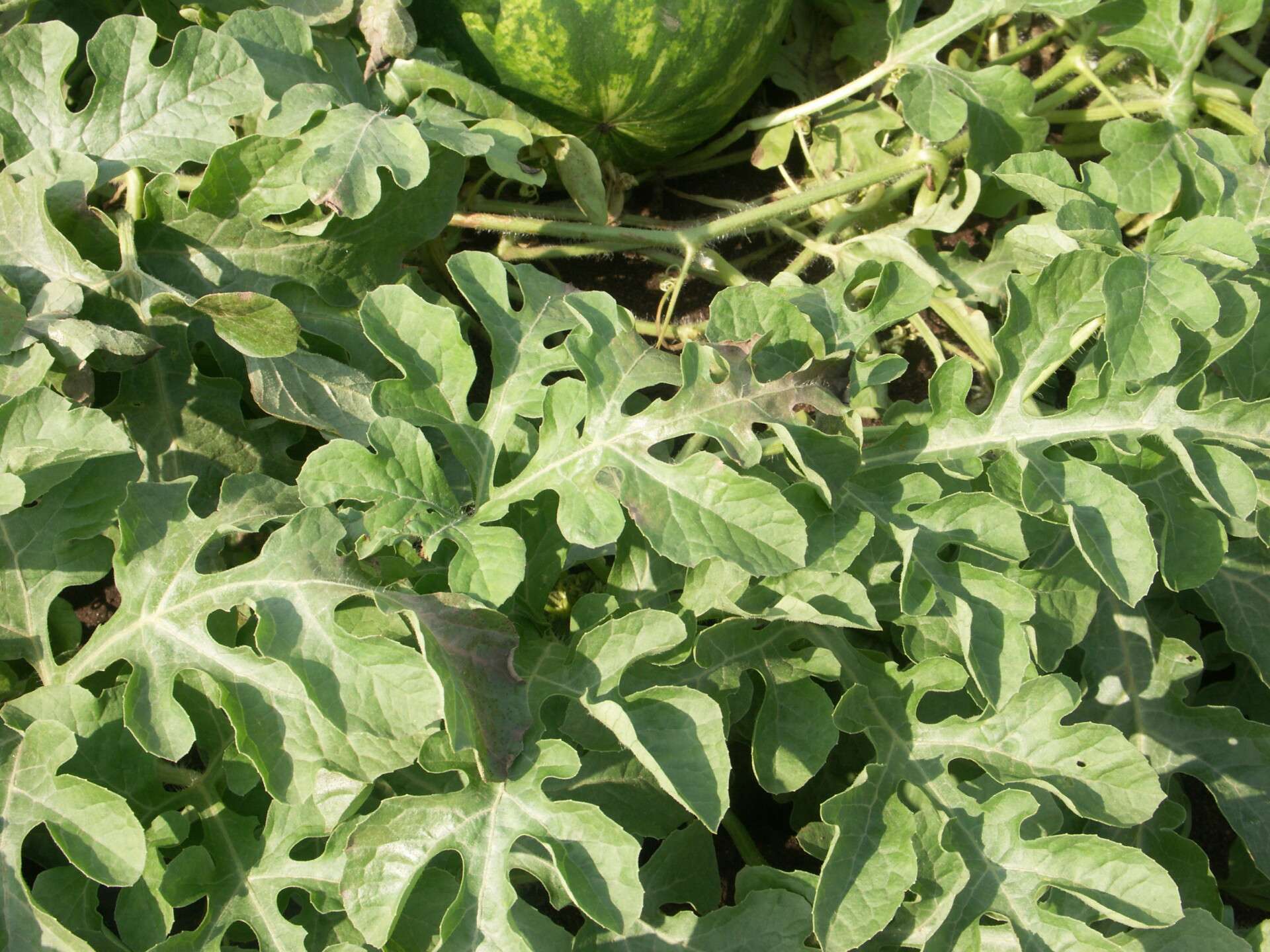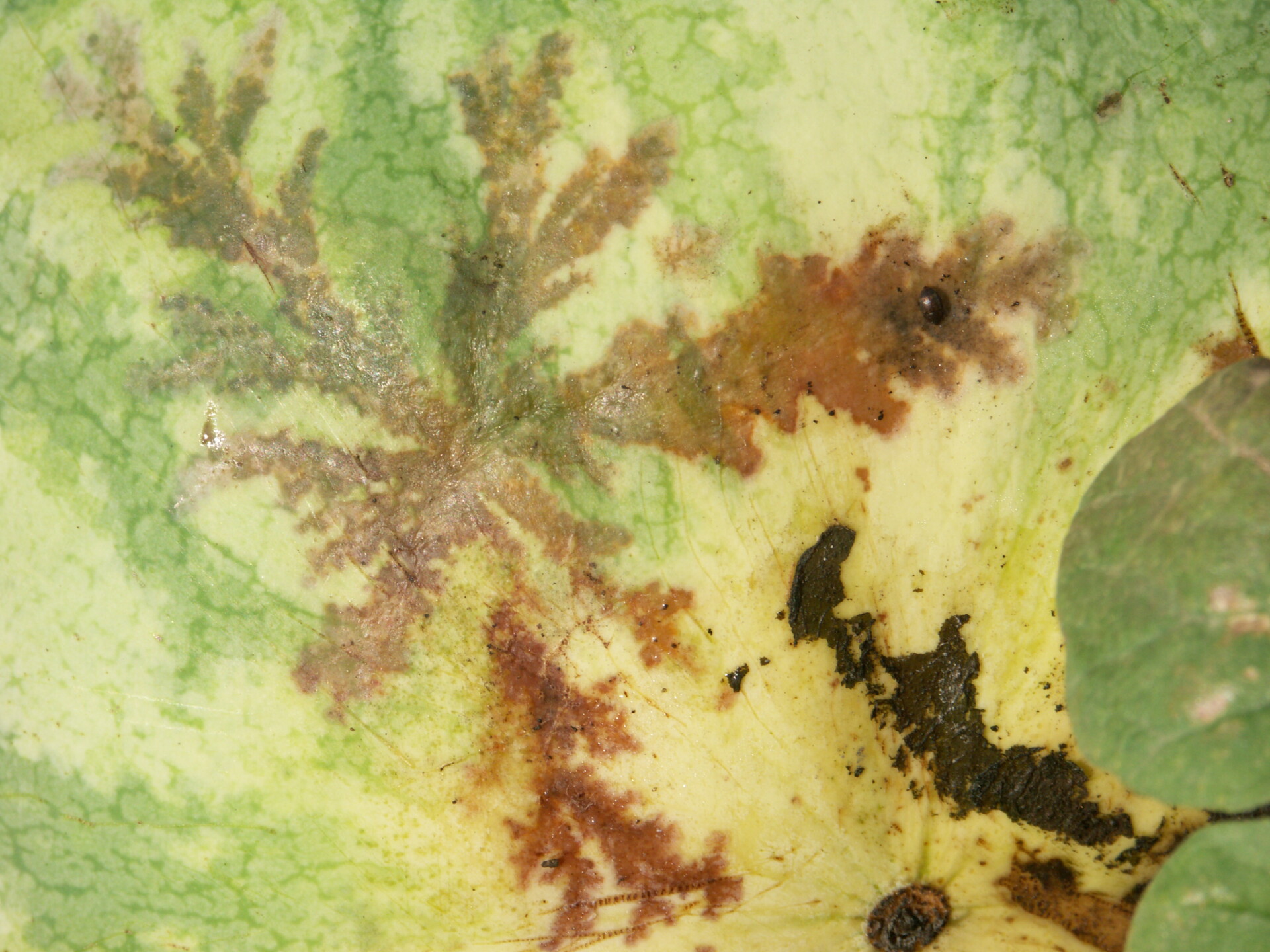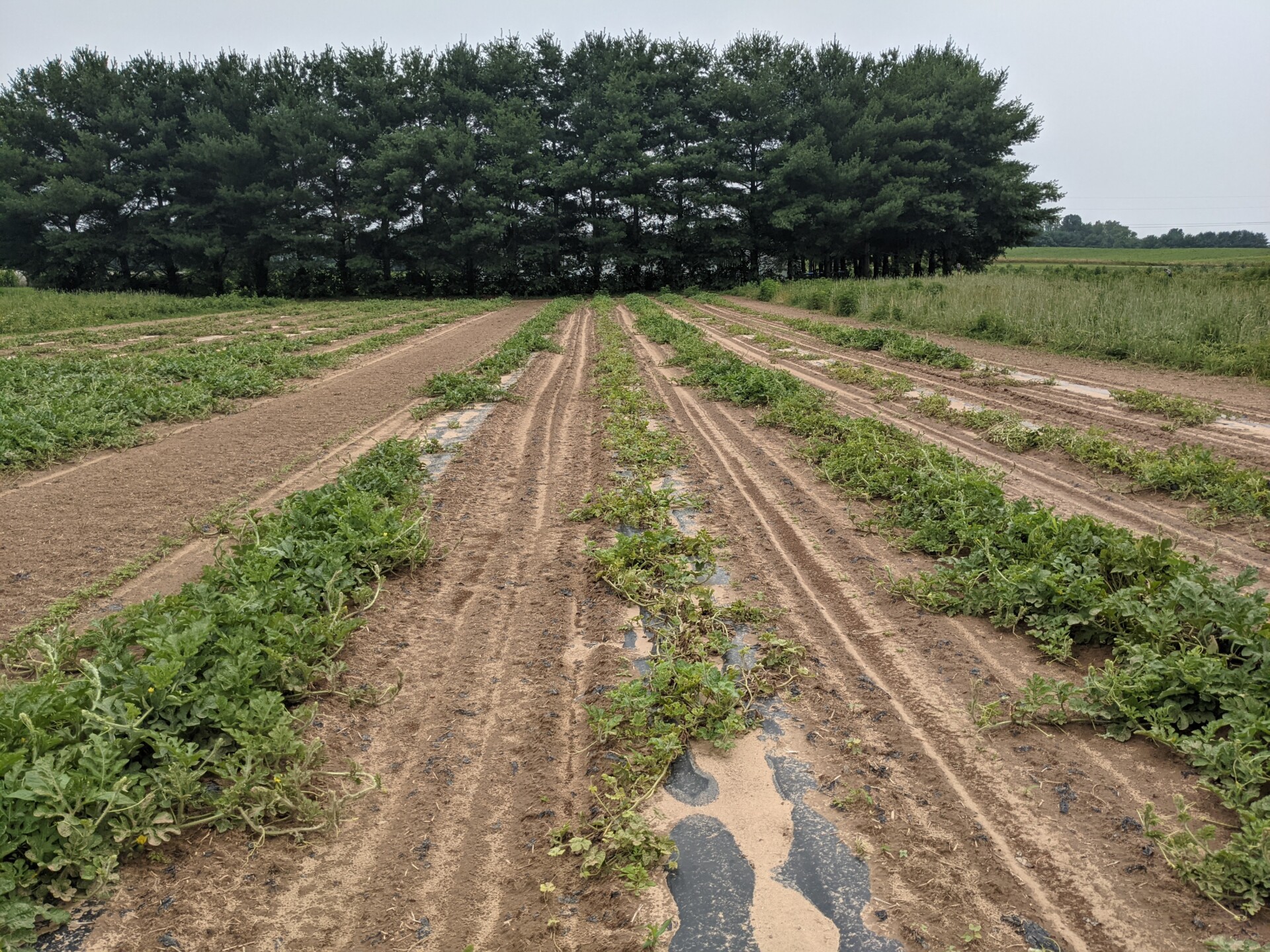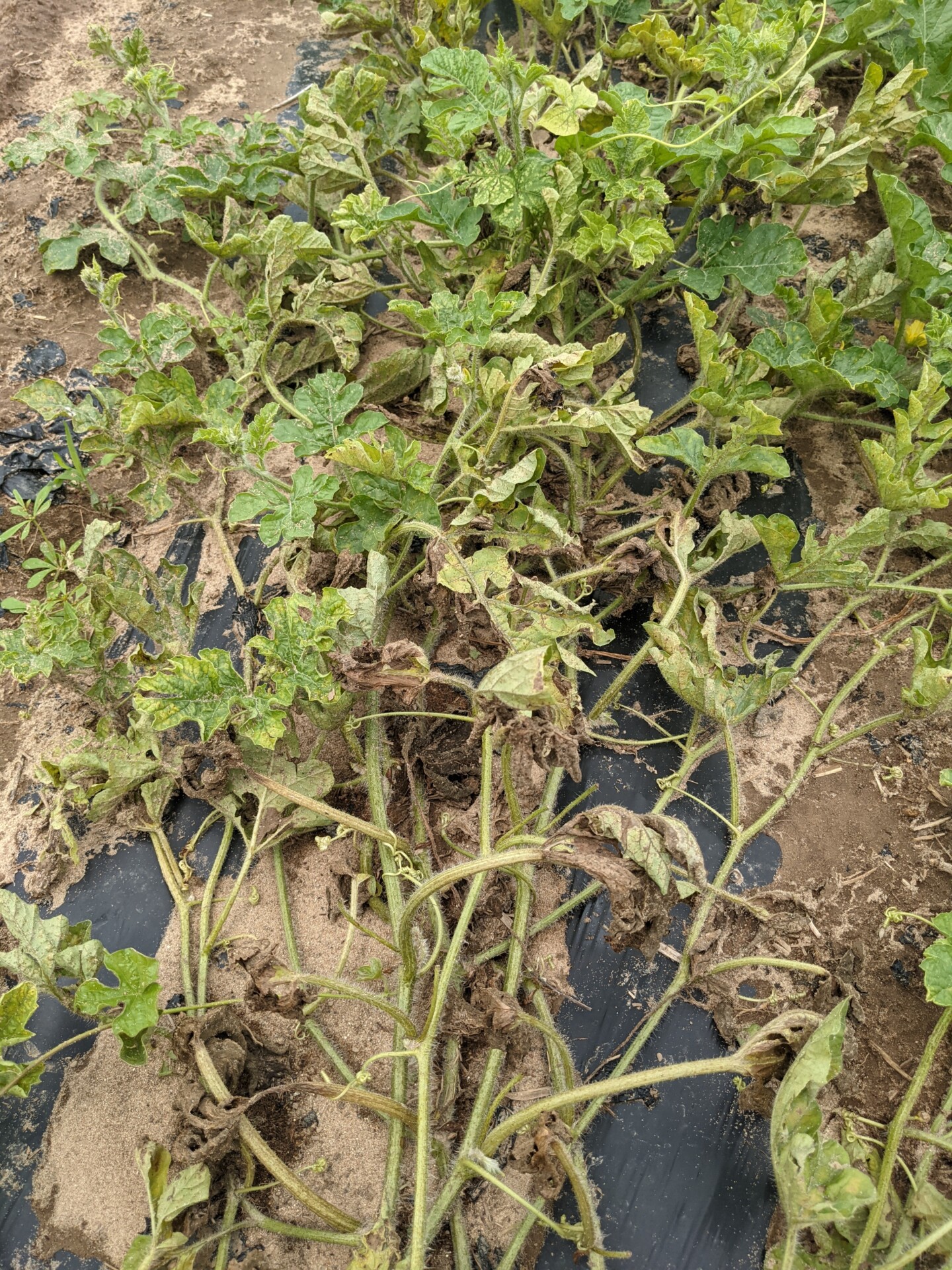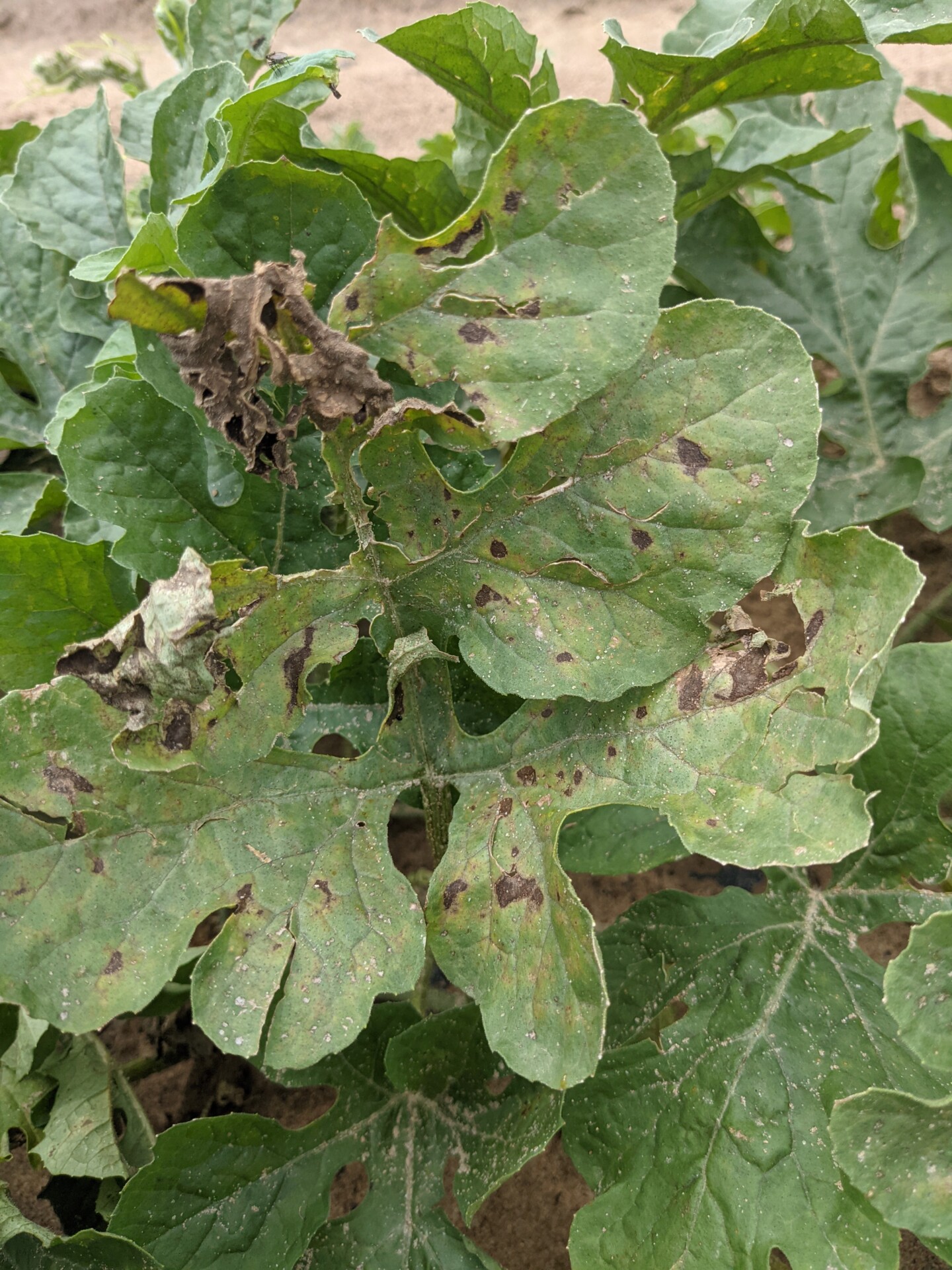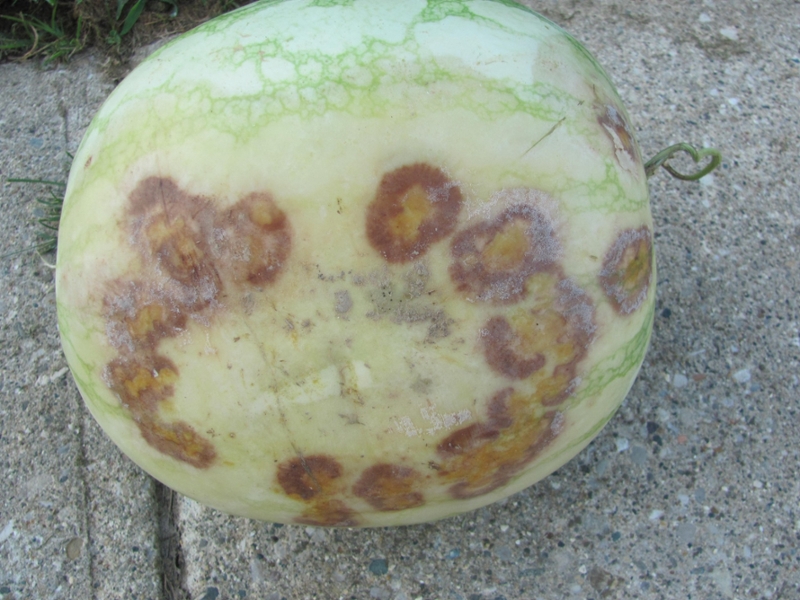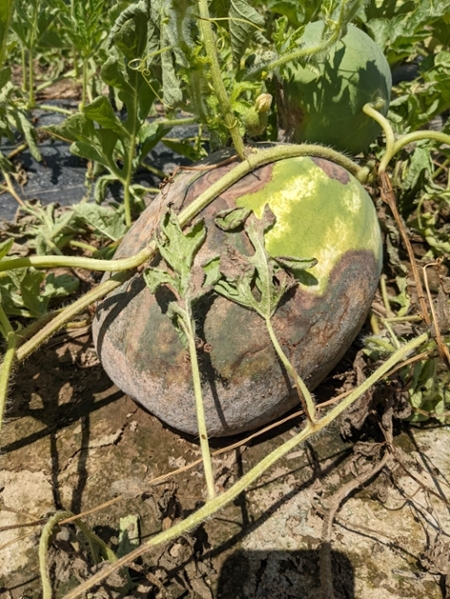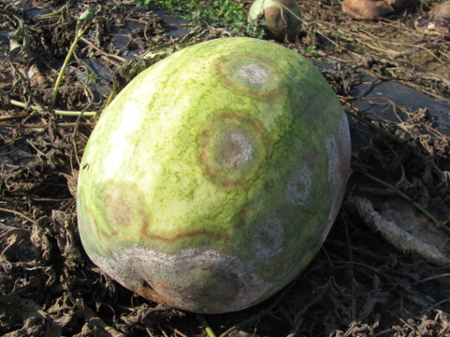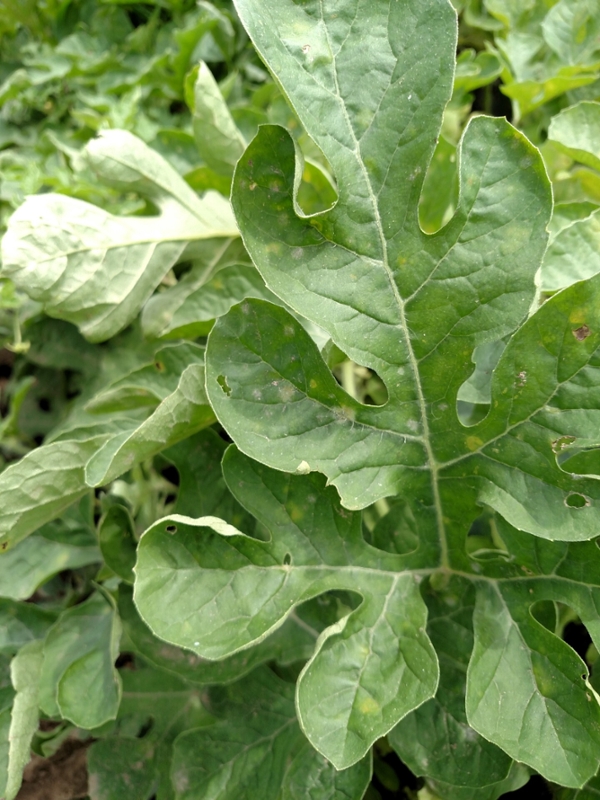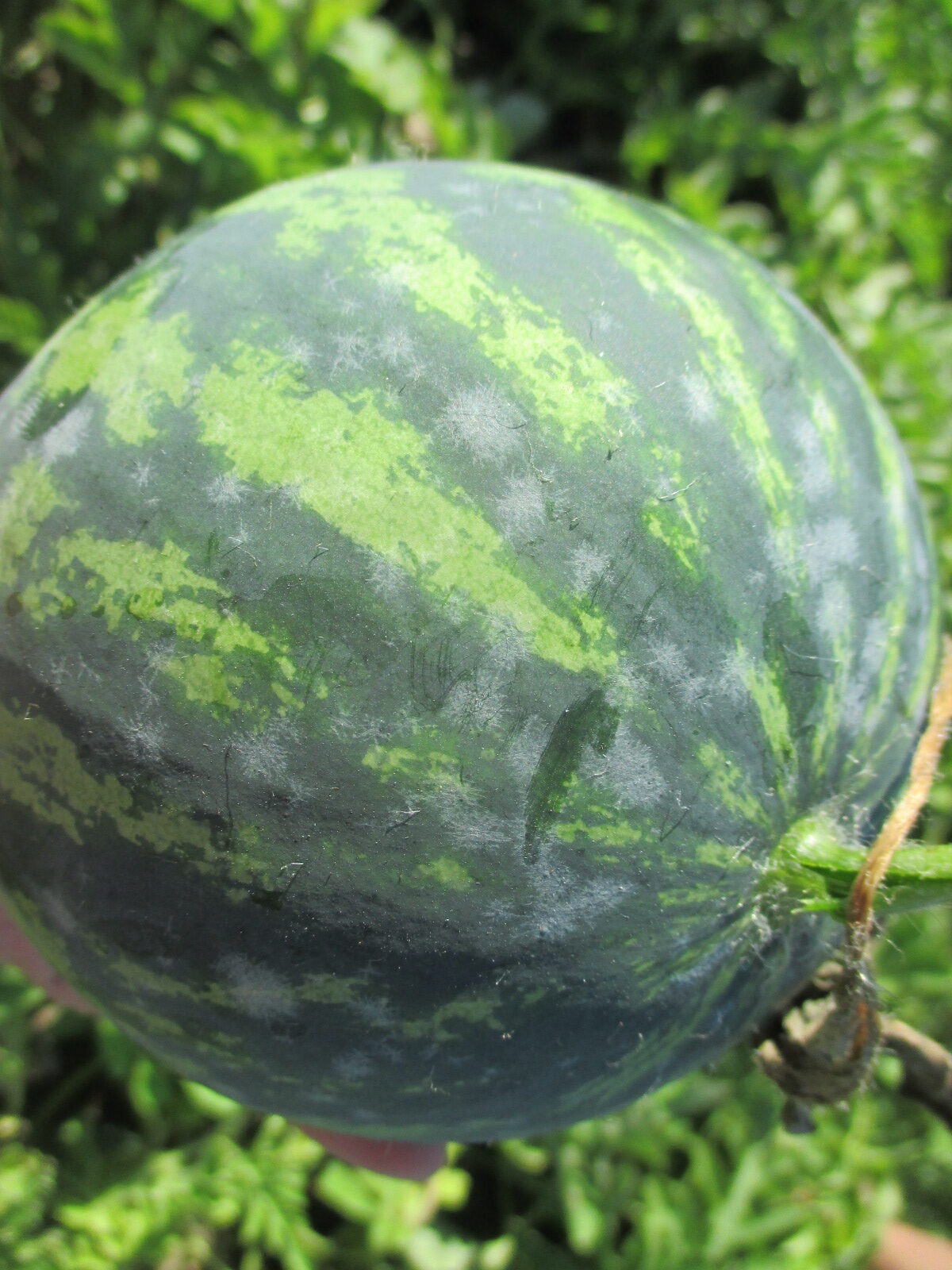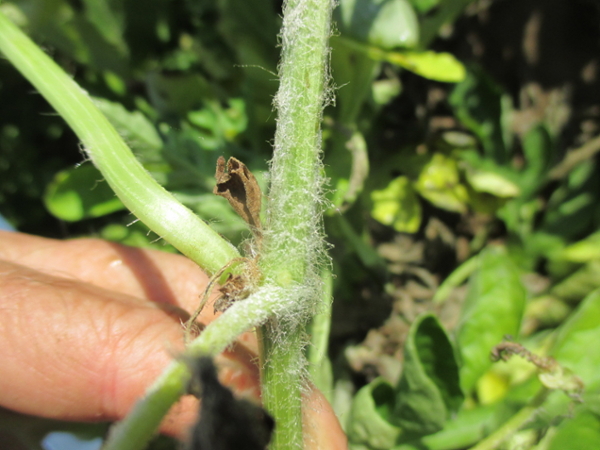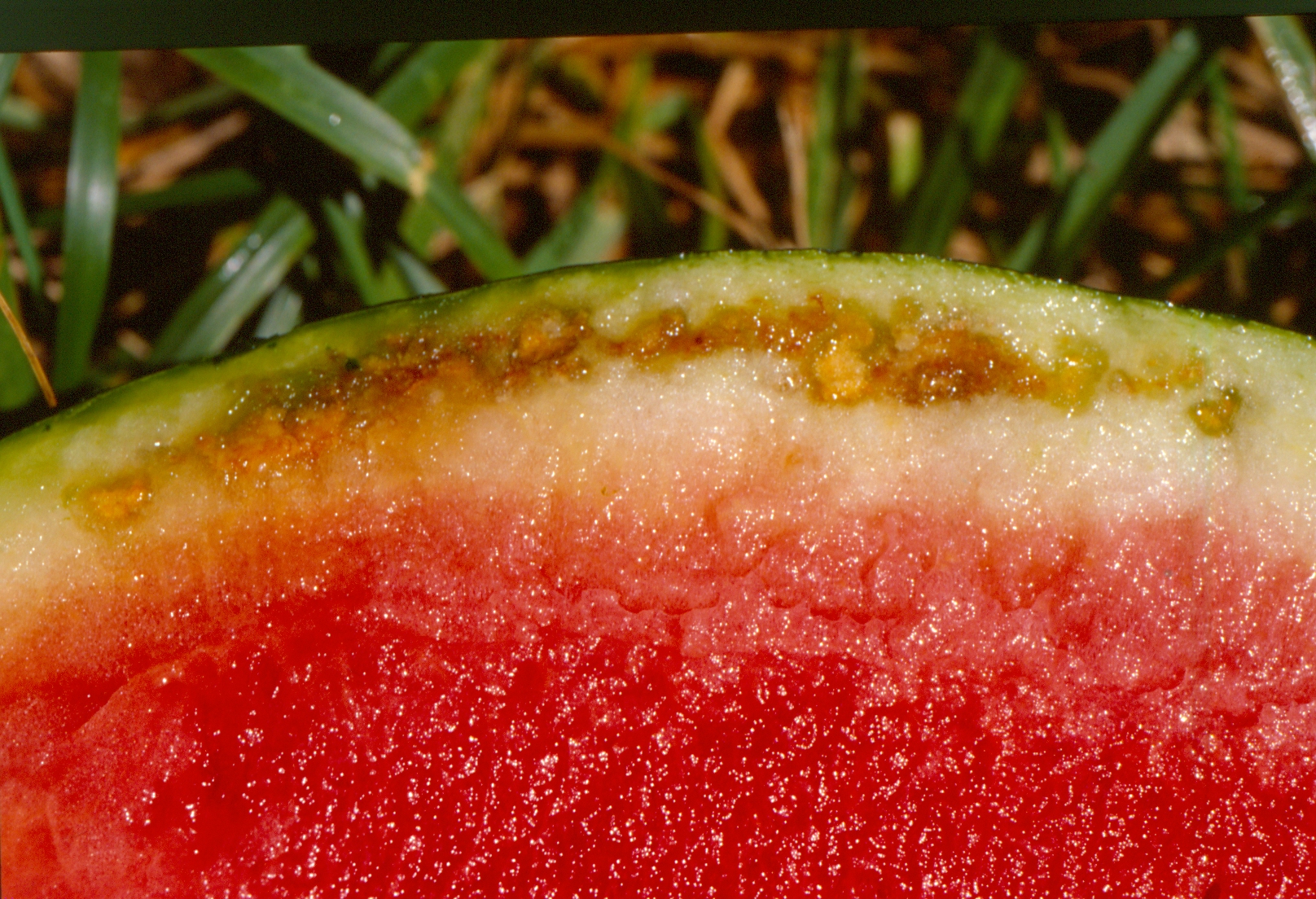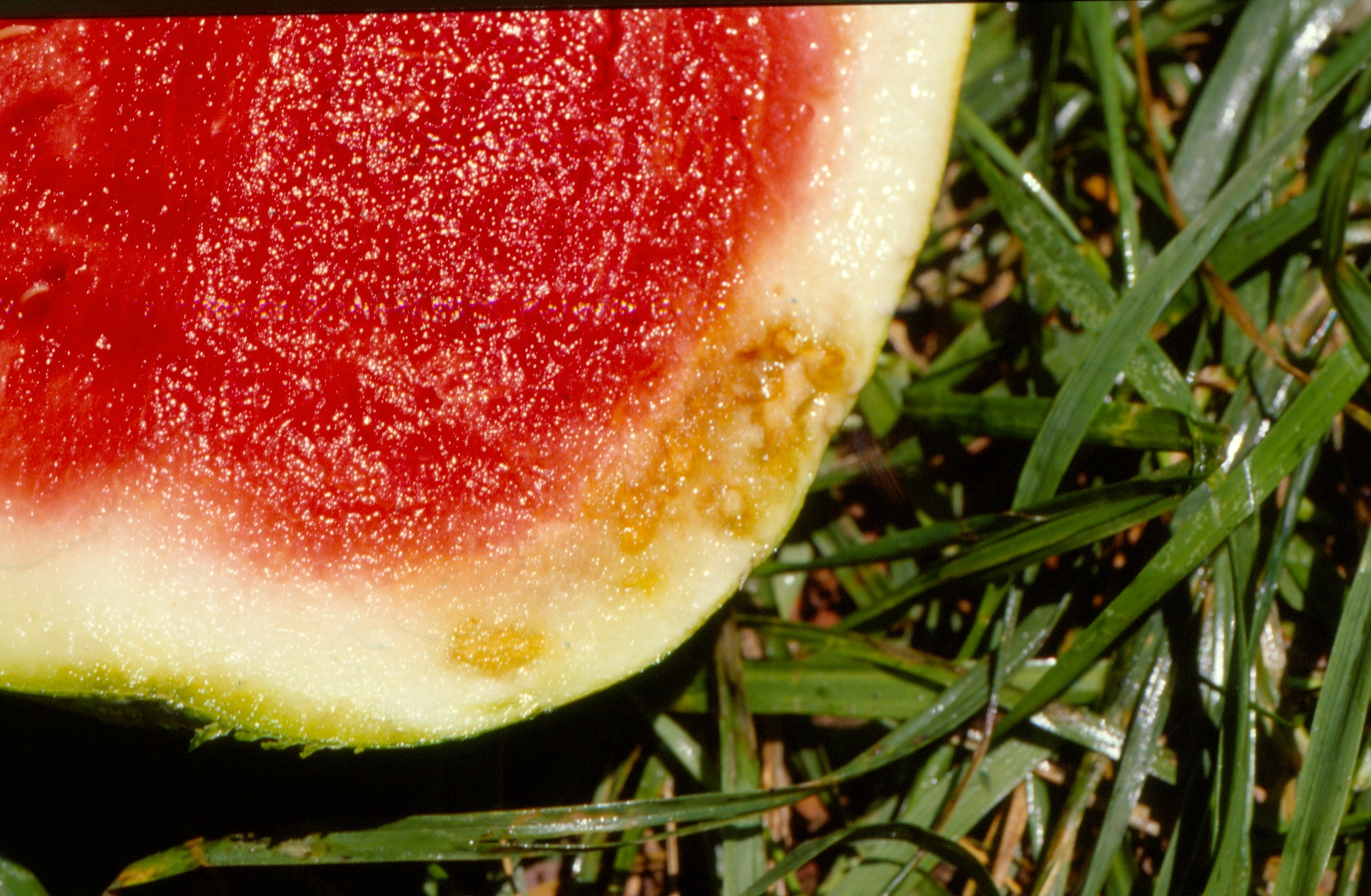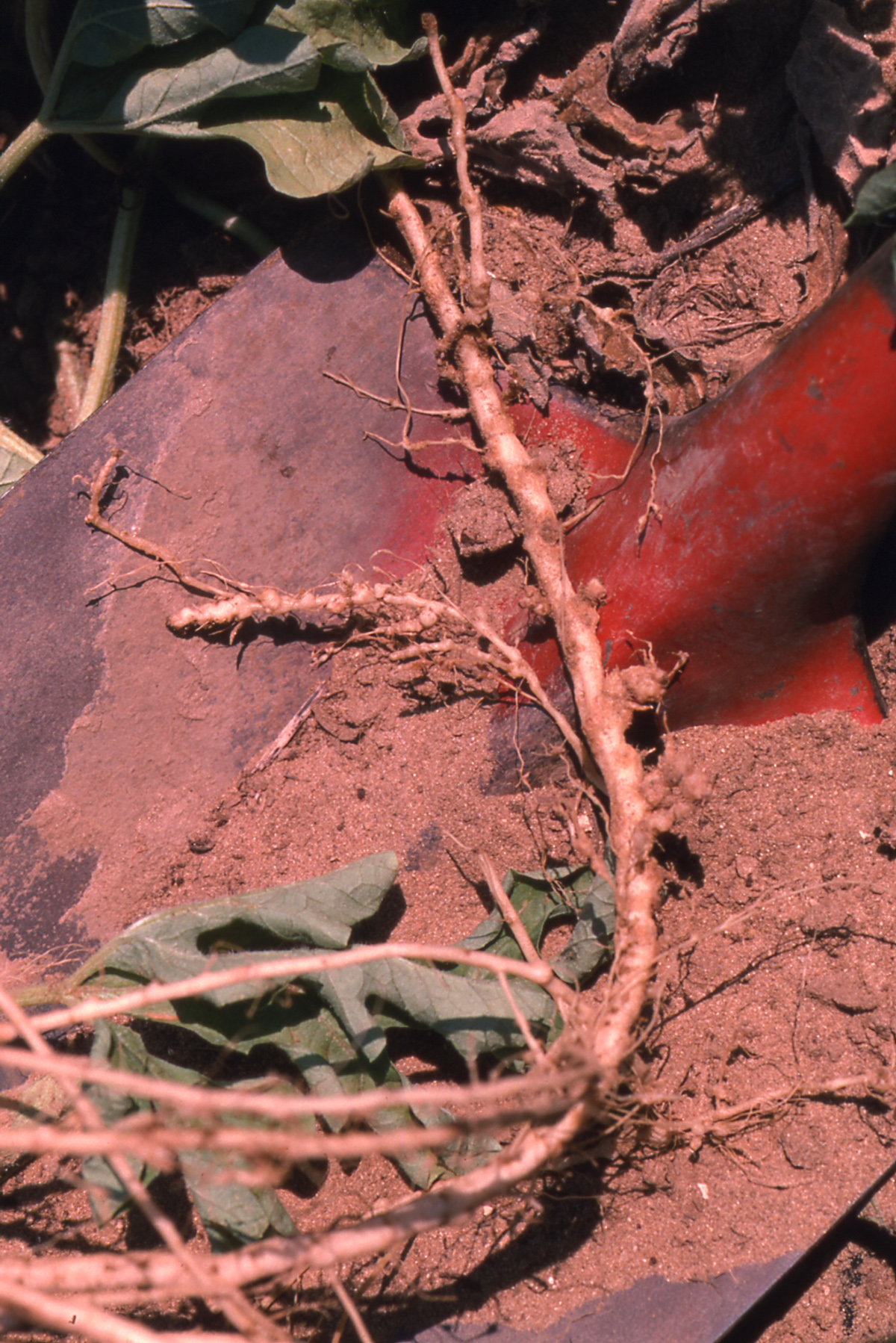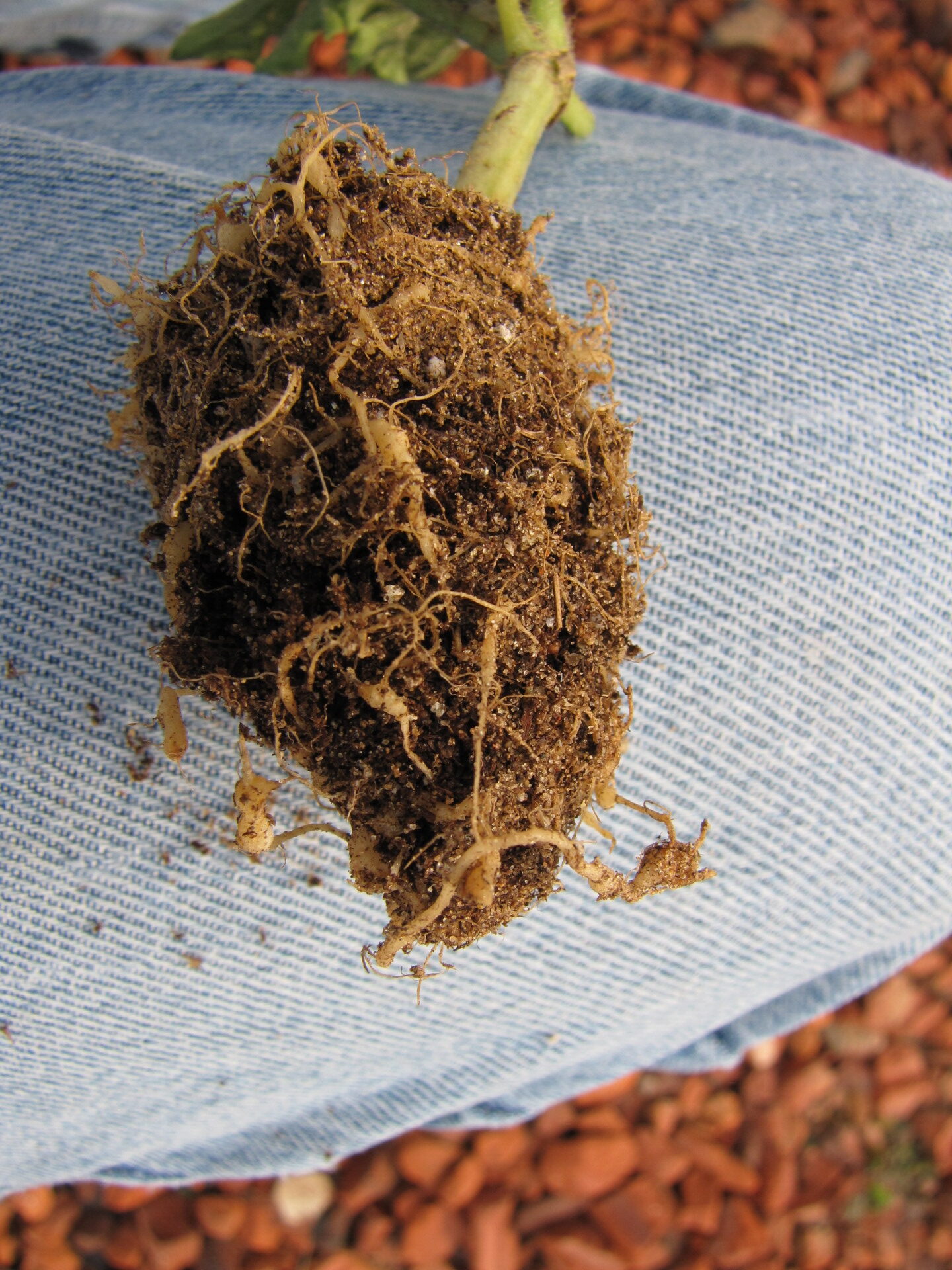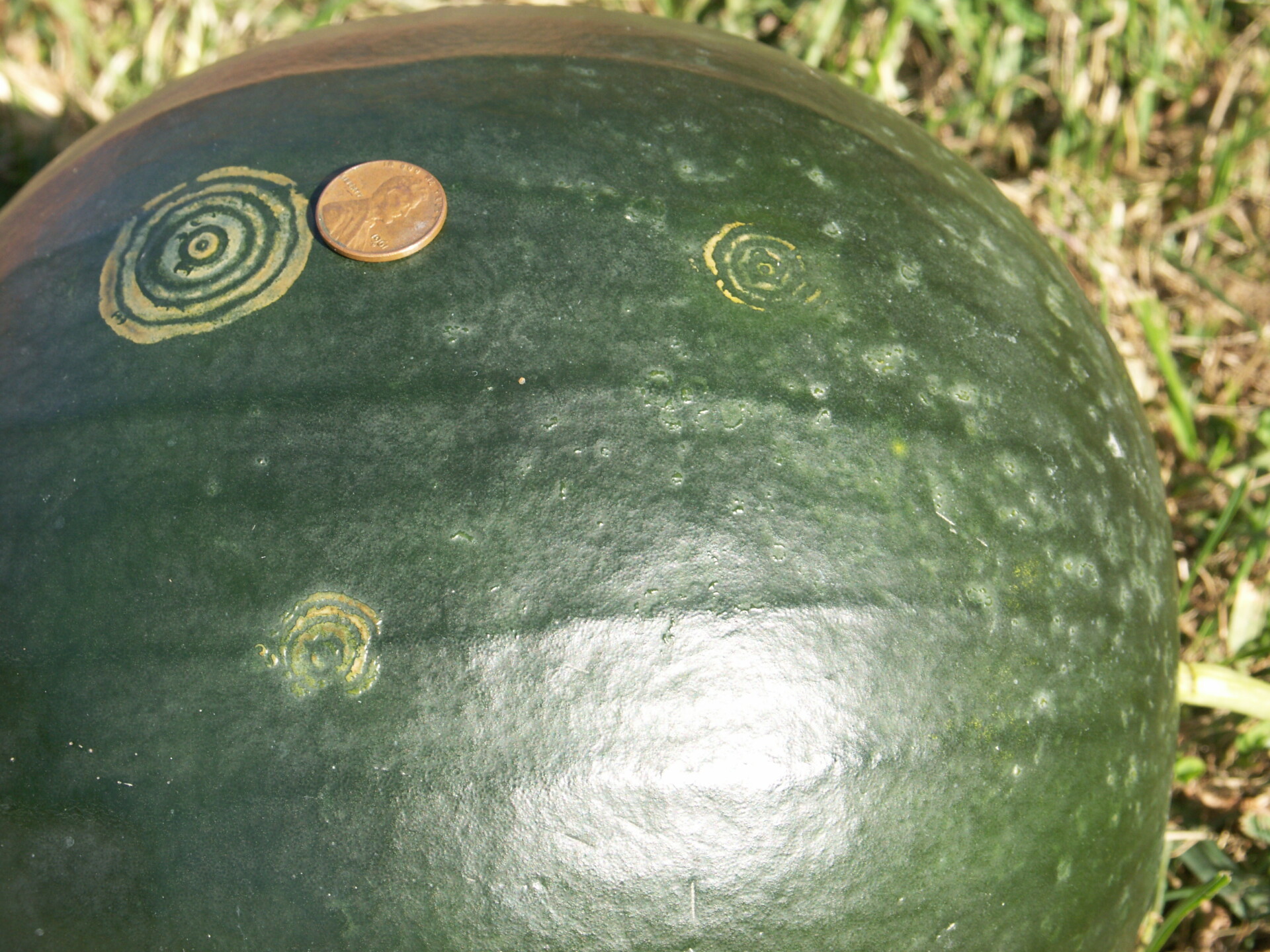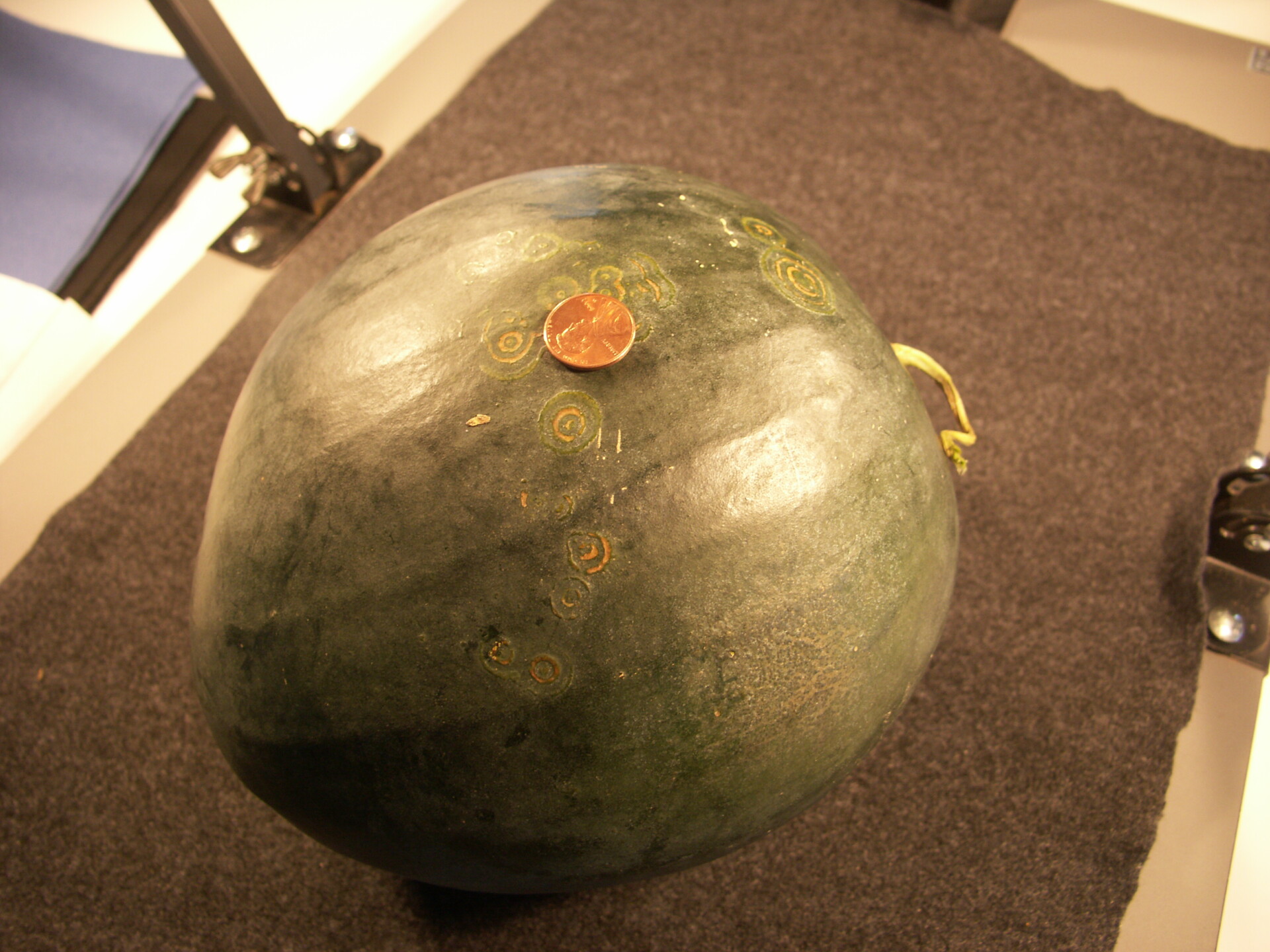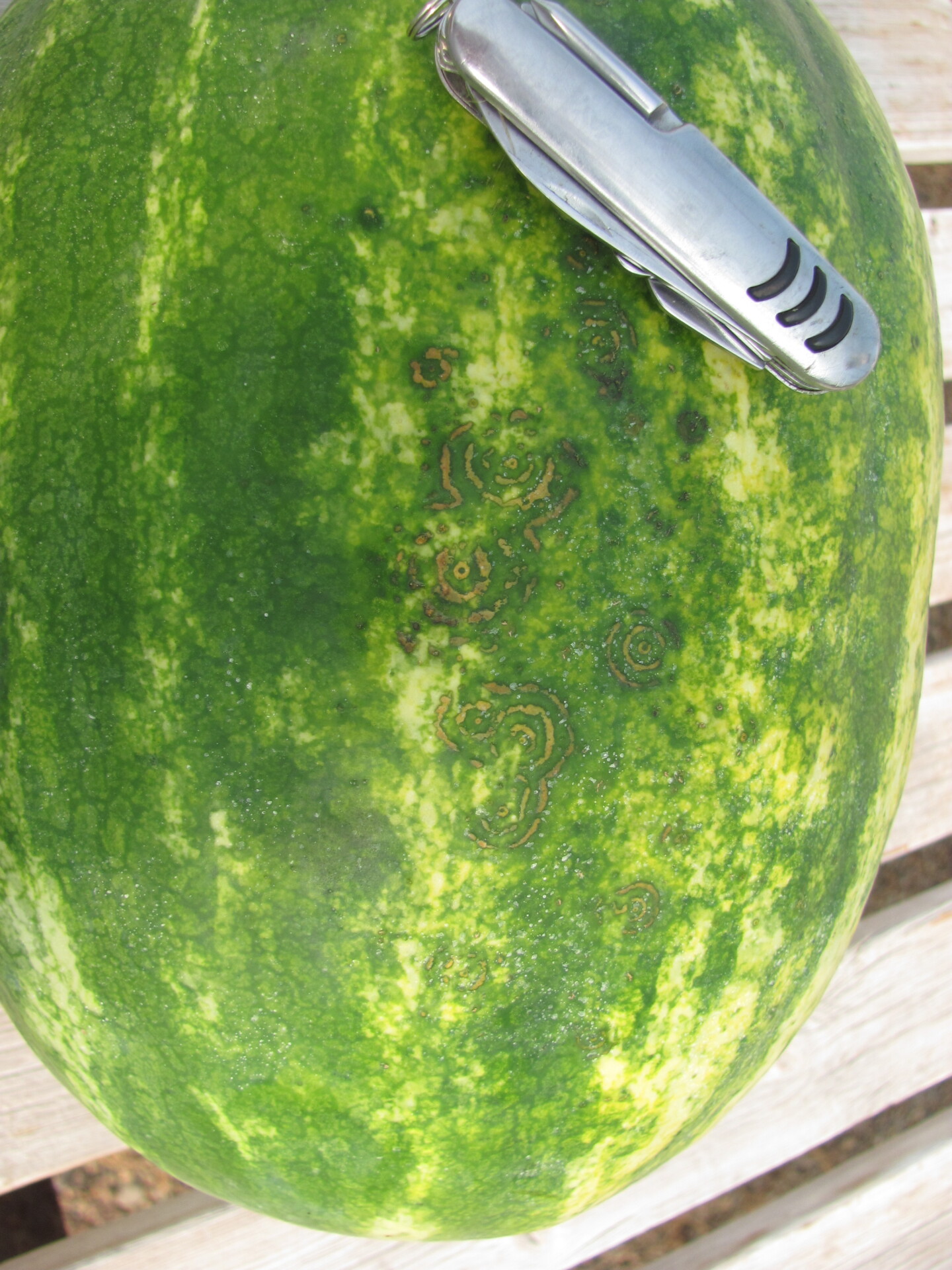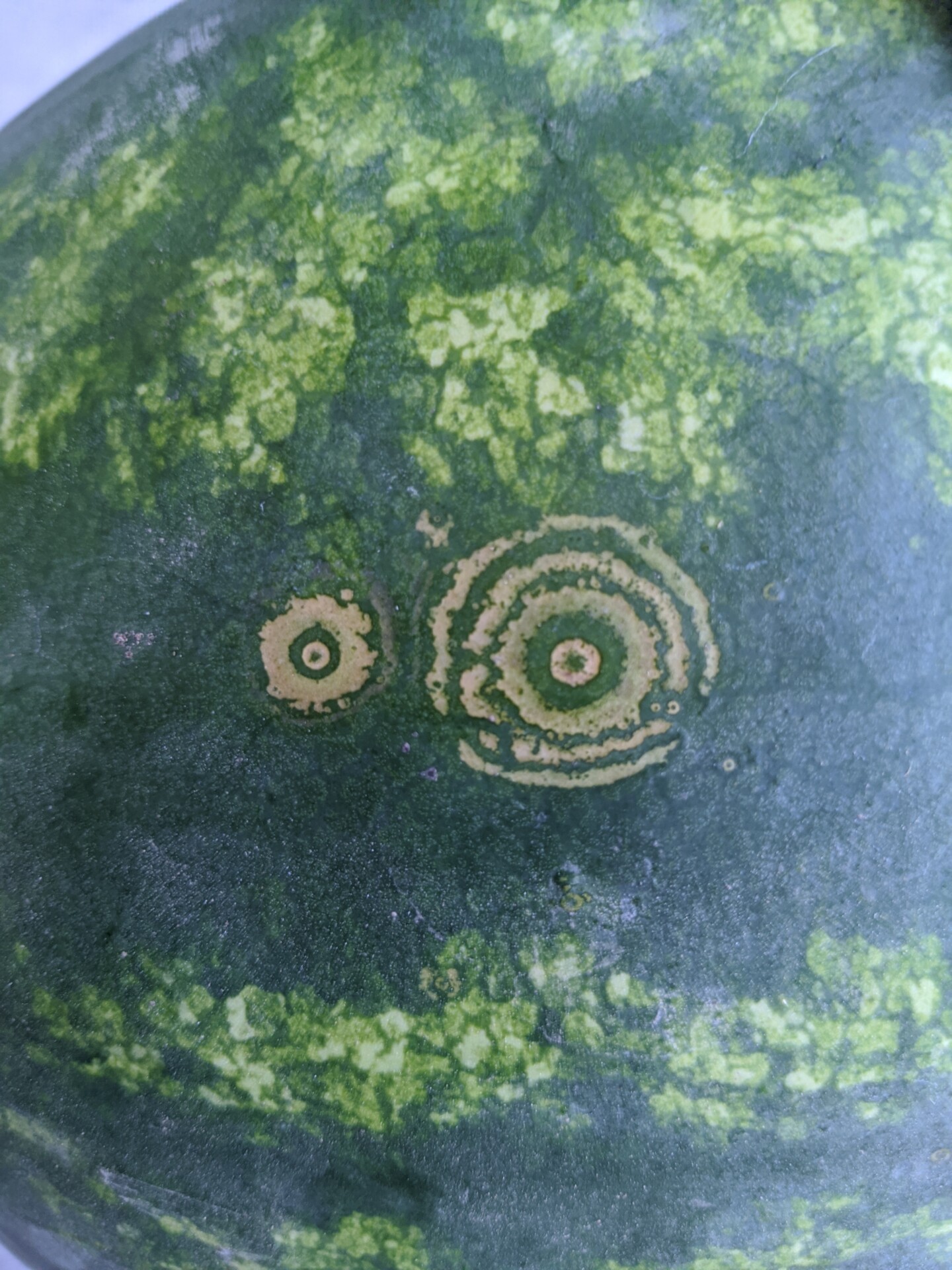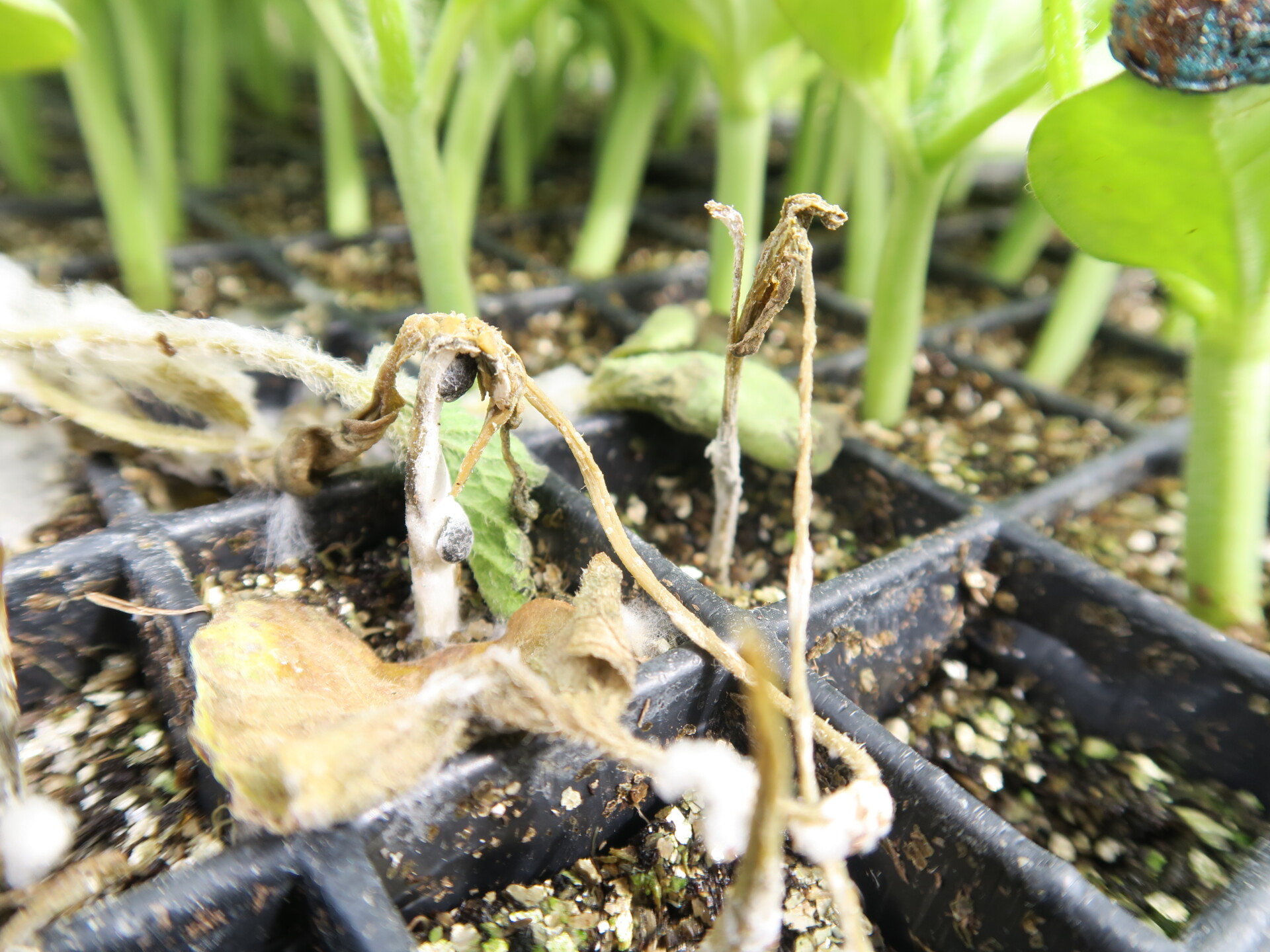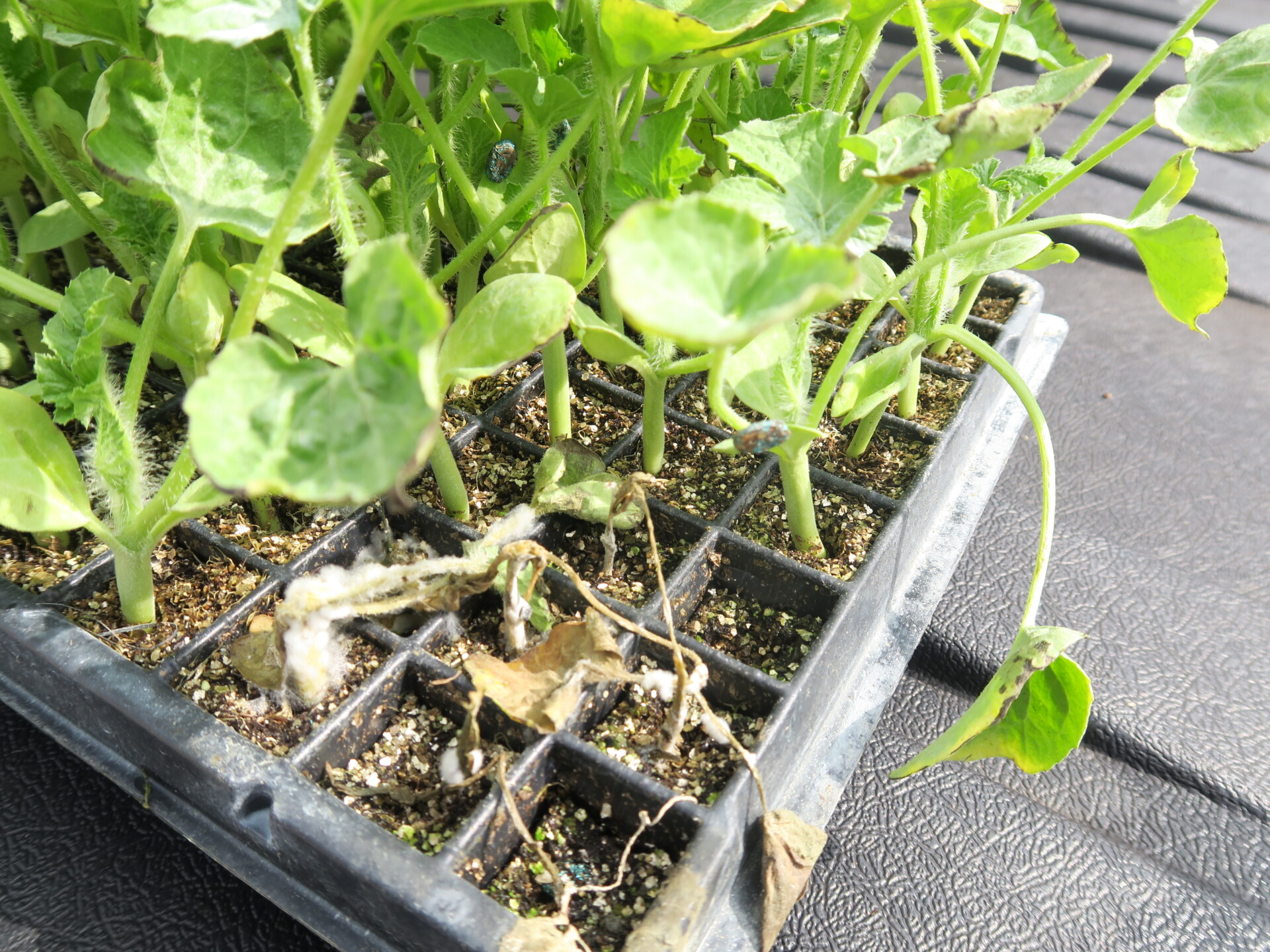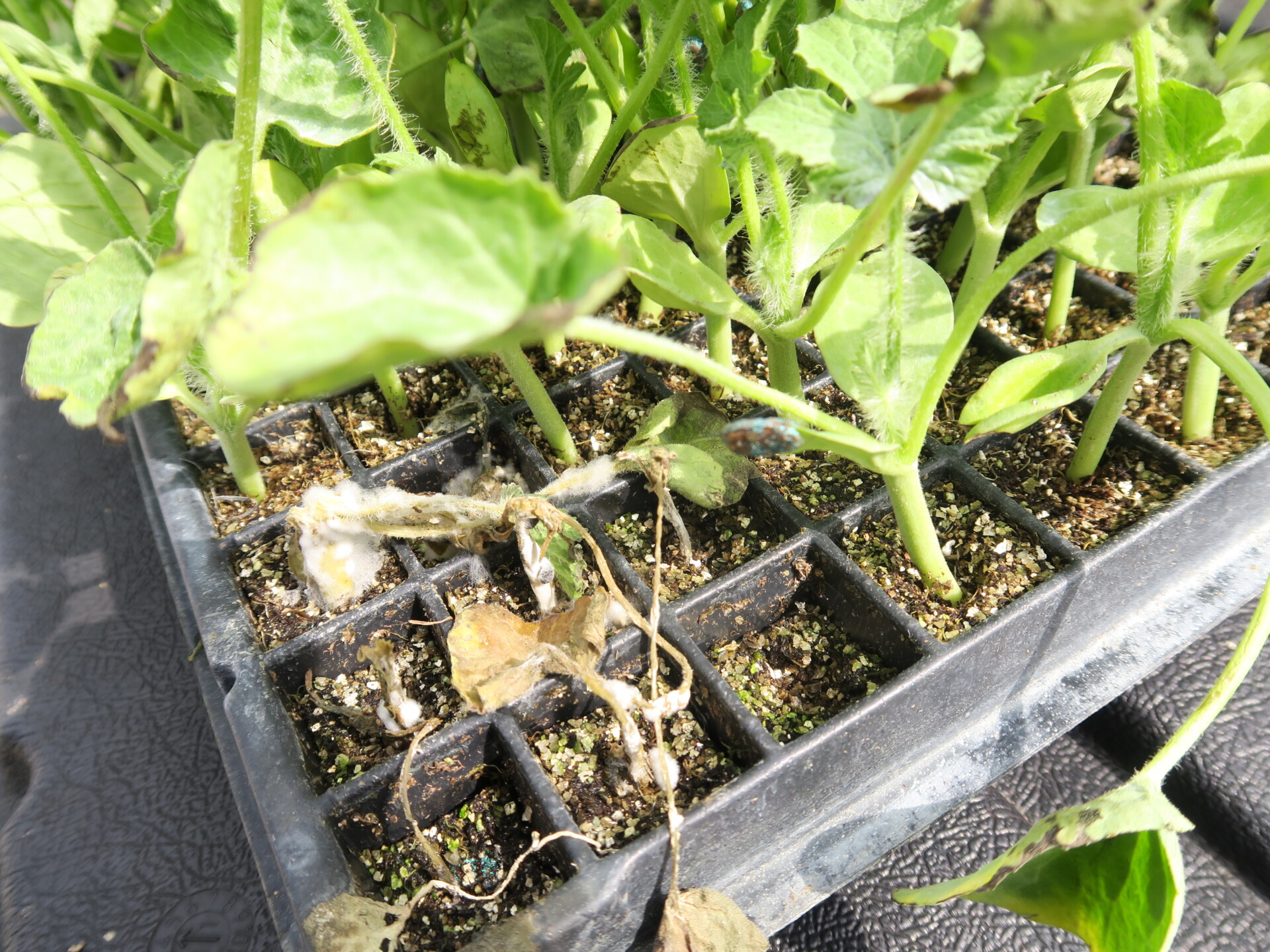watermelon diseases
Anthracnose
 Figure 2. Anthracnose lesions on the hypocotyl of these watermelon transplants has caused the plants to wilt.
Figure 2. Anthracnose lesions on the hypocotyl of these watermelon transplants has caused the plants to wilt.  Figure 3. Anthracnose lesion on several watermelon transplants. Lesions are primarily on cotyledons (seed leaves).
Figure 3. Anthracnose lesion on several watermelon transplants. Lesions are primarily on cotyledons (seed leaves).  Figure 4. Anthracnose of watermelon occasionally causes lesions on the hypocotyl, between the cotyledon and the soil.
Figure 4. Anthracnose of watermelon occasionally causes lesions on the hypocotyl, between the cotyledon and the soil. 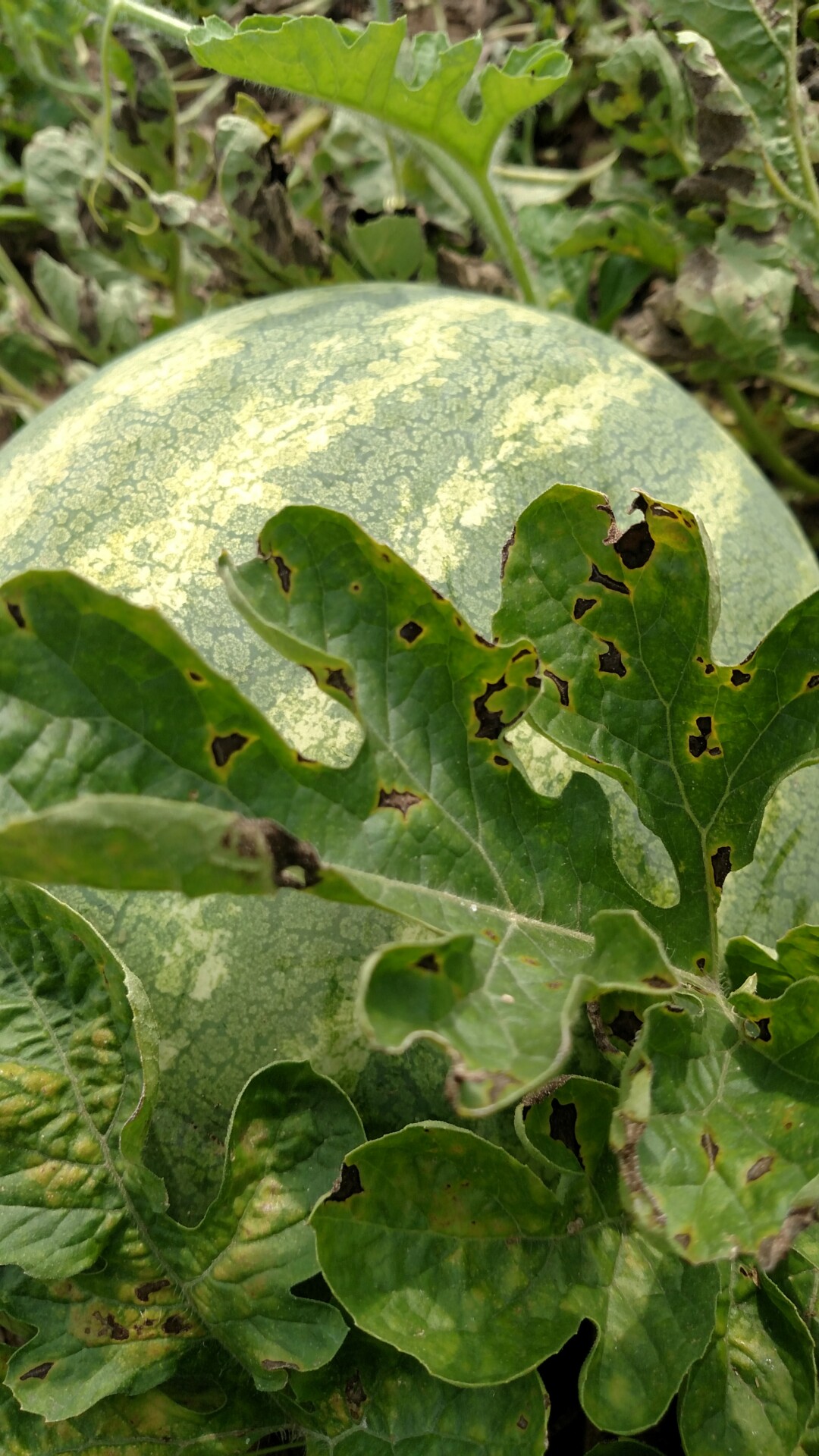 Figure 6. Another photo of anthracnose of watermelon on a leaf. Note the yellow color on the margin of the lesions.
Figure 6. Another photo of anthracnose of watermelon on a leaf. Note the yellow color on the margin of the lesions.  Figure 8. A close-up of a lesion of anthracnose on a watermelon leaf. Note the sharp, angular shape of the lesion.
Figure 8. A close-up of a lesion of anthracnose on a watermelon leaf. Note the sharp, angular shape of the lesion. Bacterial fruit blotch
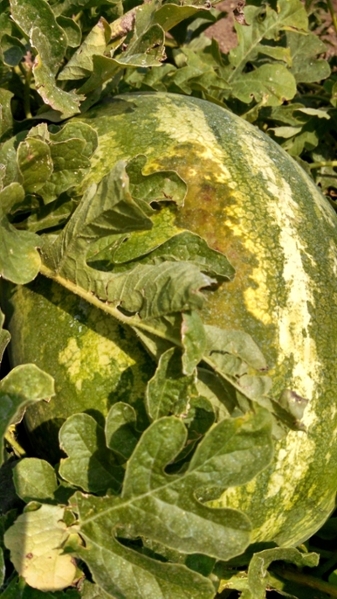 Figure 1. An irregular dark lesion can be observed on the top of this watermelon fruit caused by bacterial fruit blotch of watermelon.
Figure 1. An irregular dark lesion can be observed on the top of this watermelon fruit caused by bacterial fruit blotch of watermelon.  Figure 2. Watermelon is cracked probably due to secondary infection of a lesion of bacterial fruit blotch. Note leakage of fluids has dripped down side of fruit.
Figure 2. Watermelon is cracked probably due to secondary infection of a lesion of bacterial fruit blotch. Note leakage of fluids has dripped down side of fruit. Black root rot
 Figure 1. The symptoms of wilt in this watermelon could be from many causes. Black root rot can cause wilt such as seen here.
Figure 1. The symptoms of wilt in this watermelon could be from many causes. Black root rot can cause wilt such as seen here. 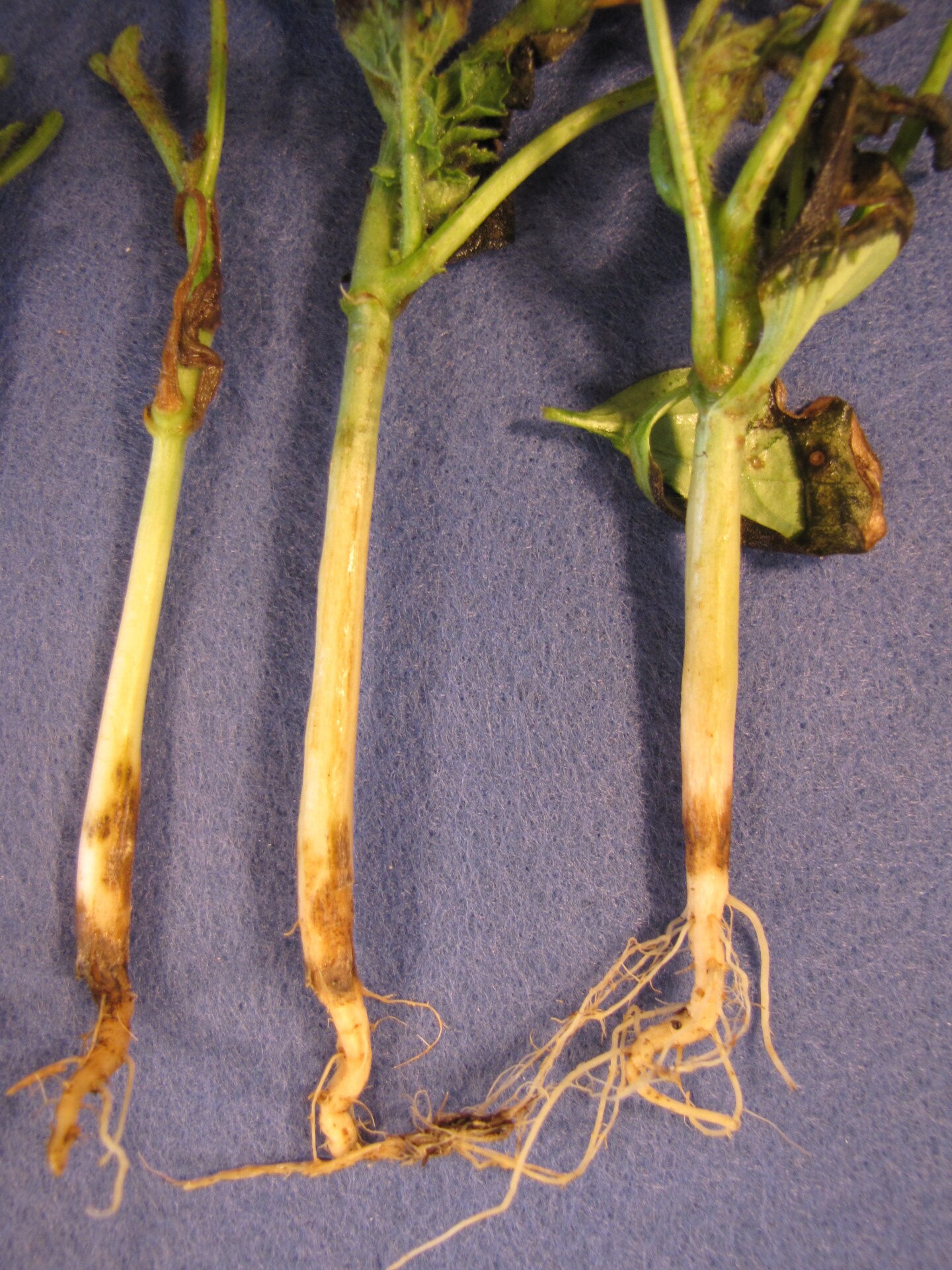 Figure 2. Dark areas on the hypocotyl of this watermelon seedling is caused by chlamydospores (resting spores) of the fungus that causes black root rot (Thielaviopsis basicola).
Figure 2. Dark areas on the hypocotyl of this watermelon seedling is caused by chlamydospores (resting spores) of the fungus that causes black root rot (Thielaviopsis basicola).  Figure 4. The structures seen here in root tissue are specialized spores known as chlamydospores. These spores are resilient resting spores that help the fungus survive for long periods in the soil. In addition, these spores impart a dark appearance to tissue.
Figure 4. The structures seen here in root tissue are specialized spores known as chlamydospores. These spores are resilient resting spores that help the fungus survive for long periods in the soil. In addition, these spores impart a dark appearance to tissue. Fusarium wilt
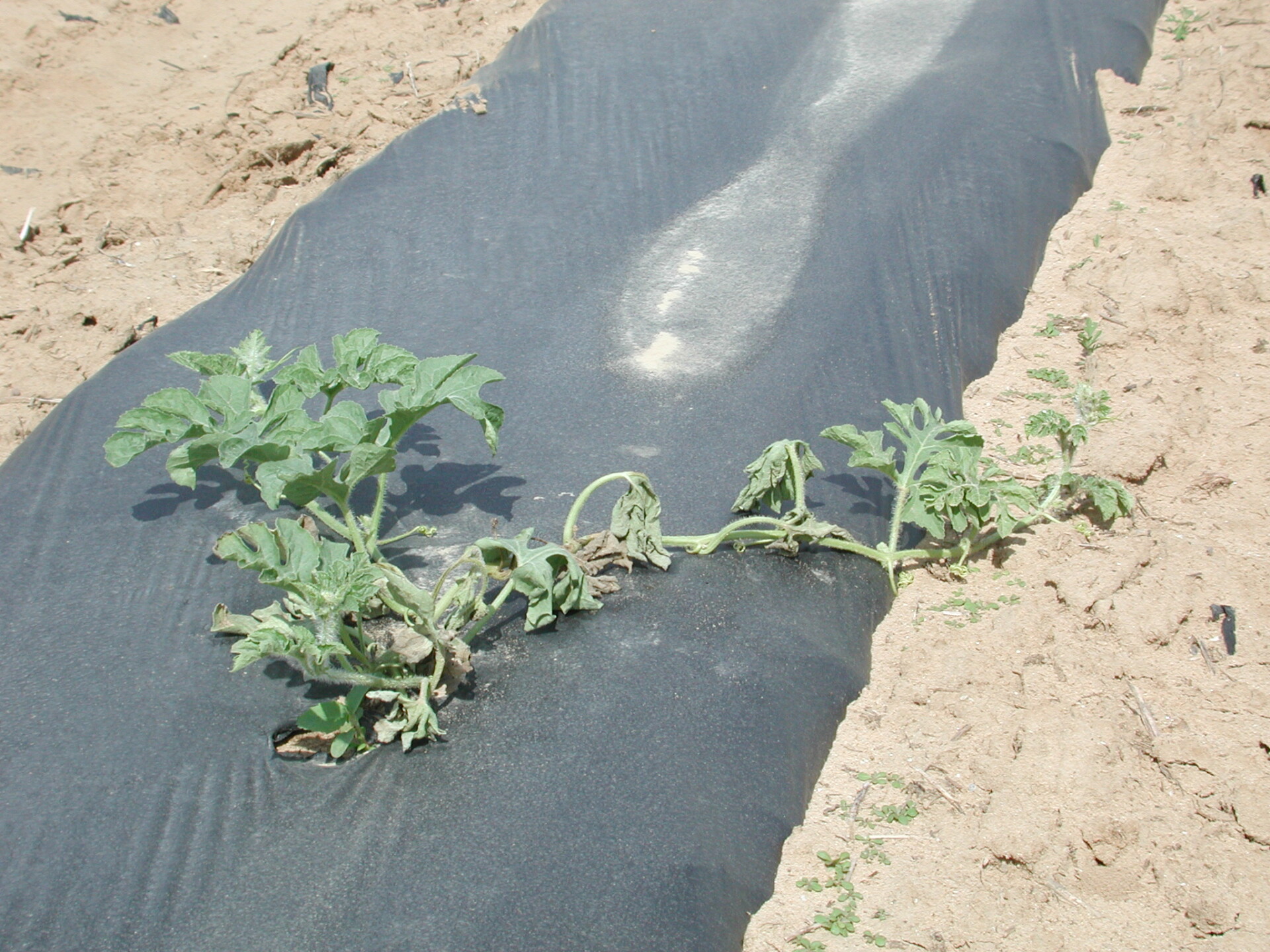 Figure 1. Fusarium wilt of watermelon often causes one vine to wilt while the rest of the plant appears unaffected. Symptoms of this disease often begin when plants are just starting to vine.
Figure 1. Fusarium wilt of watermelon often causes one vine to wilt while the rest of the plant appears unaffected. Symptoms of this disease often begin when plants are just starting to vine. 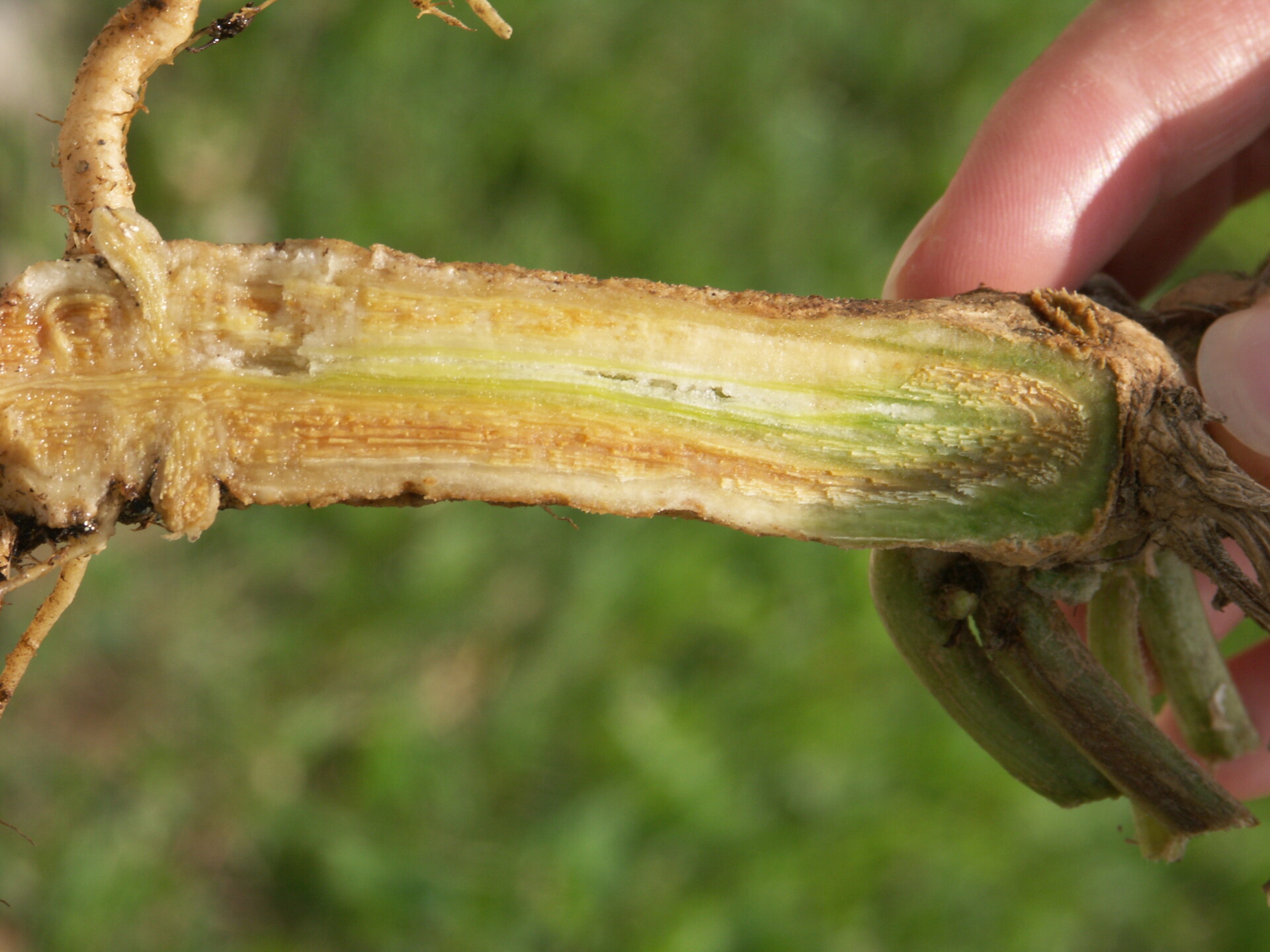 Figure 2. Vascular discoloration present in lower stem may be a symptom of Fusarium wilt of watermelon. Note that one-sided vascular discoloration in the stem may correspond to one-sided wilt in plant.
Figure 2. Vascular discoloration present in lower stem may be a symptom of Fusarium wilt of watermelon. Note that one-sided vascular discoloration in the stem may correspond to one-sided wilt in plant.  Figure 4. Early symptoms of Fusarium wilt in watermelon include wilt of almost all leaves. Note coloration of wilted leaves.
Figure 4. Early symptoms of Fusarium wilt in watermelon include wilt of almost all leaves. Note coloration of wilted leaves. 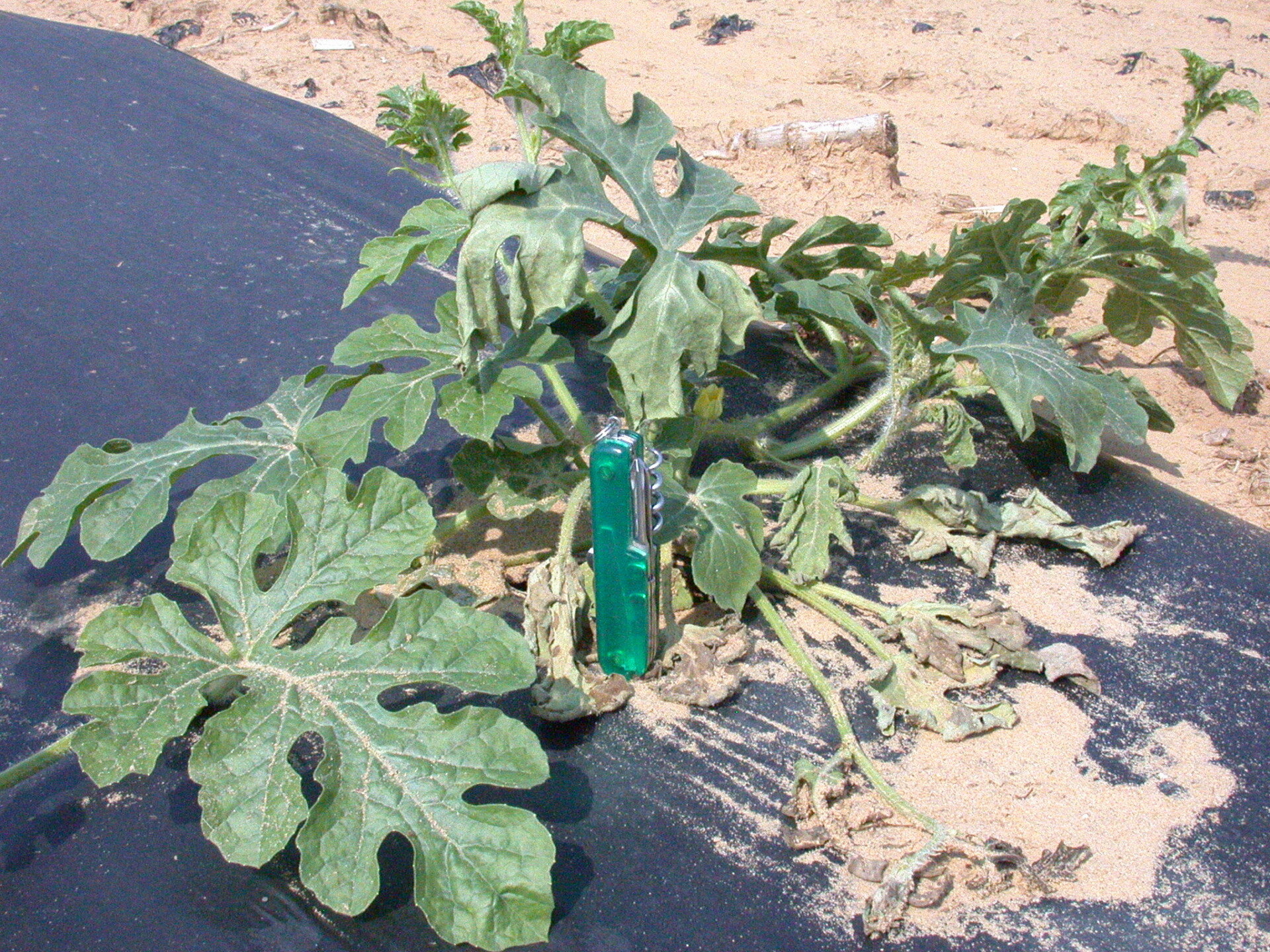 Figure 5. One sided wilt of watermelon leaf. Note also that older leaves usually wilt before young leaves.
Figure 5. One sided wilt of watermelon leaf. Note also that older leaves usually wilt before young leaves.  Figure 6. Seedling distribution of Fusarium wilt in watermelon may be randomly distributed in transplant trays.
Figure 6. Seedling distribution of Fusarium wilt in watermelon may be randomly distributed in transplant trays. 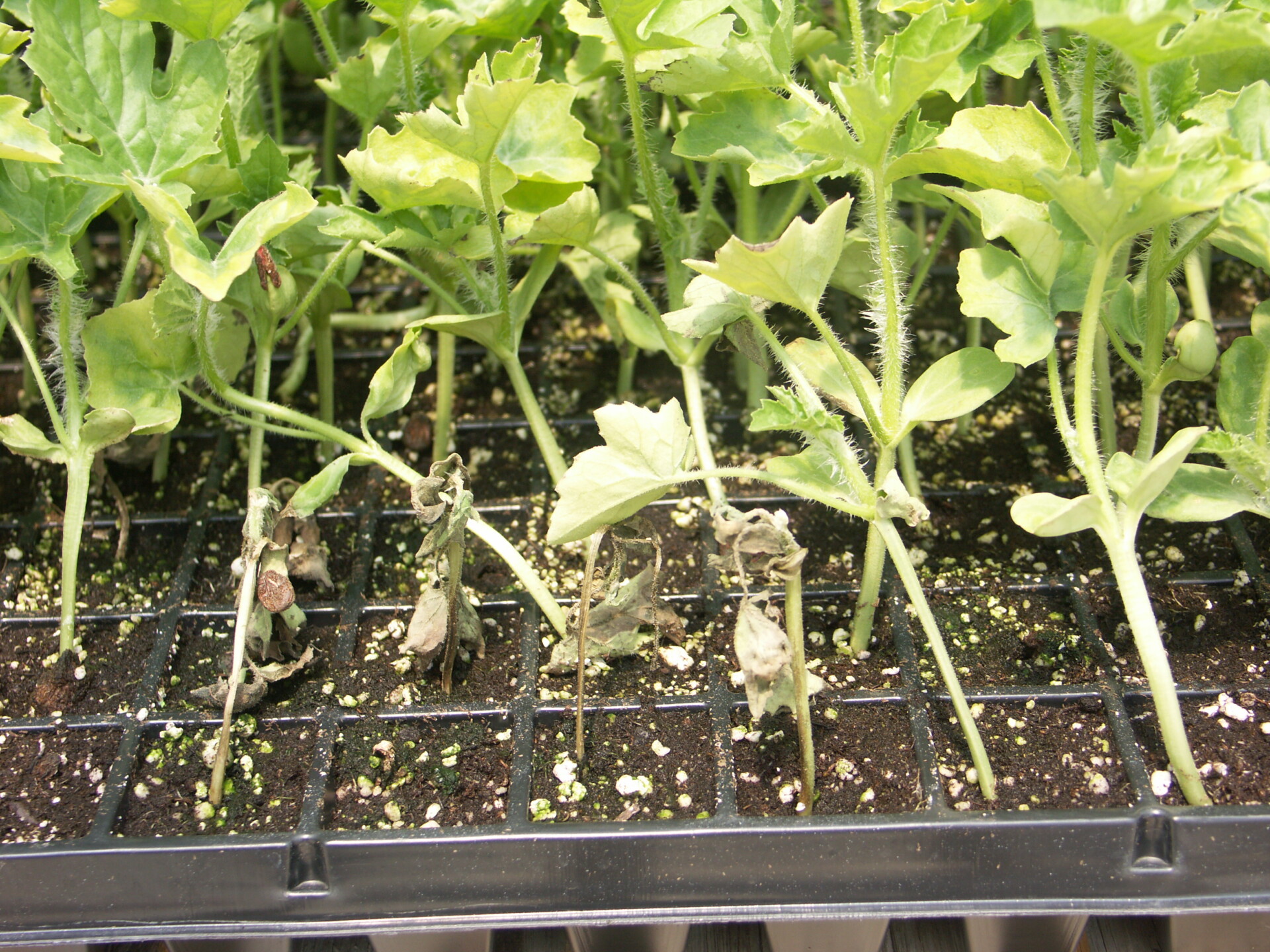 Figure 7. Distribution of Fusarium wilt of watermelon in transplant trays may be clustered under some circumstances.
Figure 7. Distribution of Fusarium wilt of watermelon in transplant trays may be clustered under some circumstances. 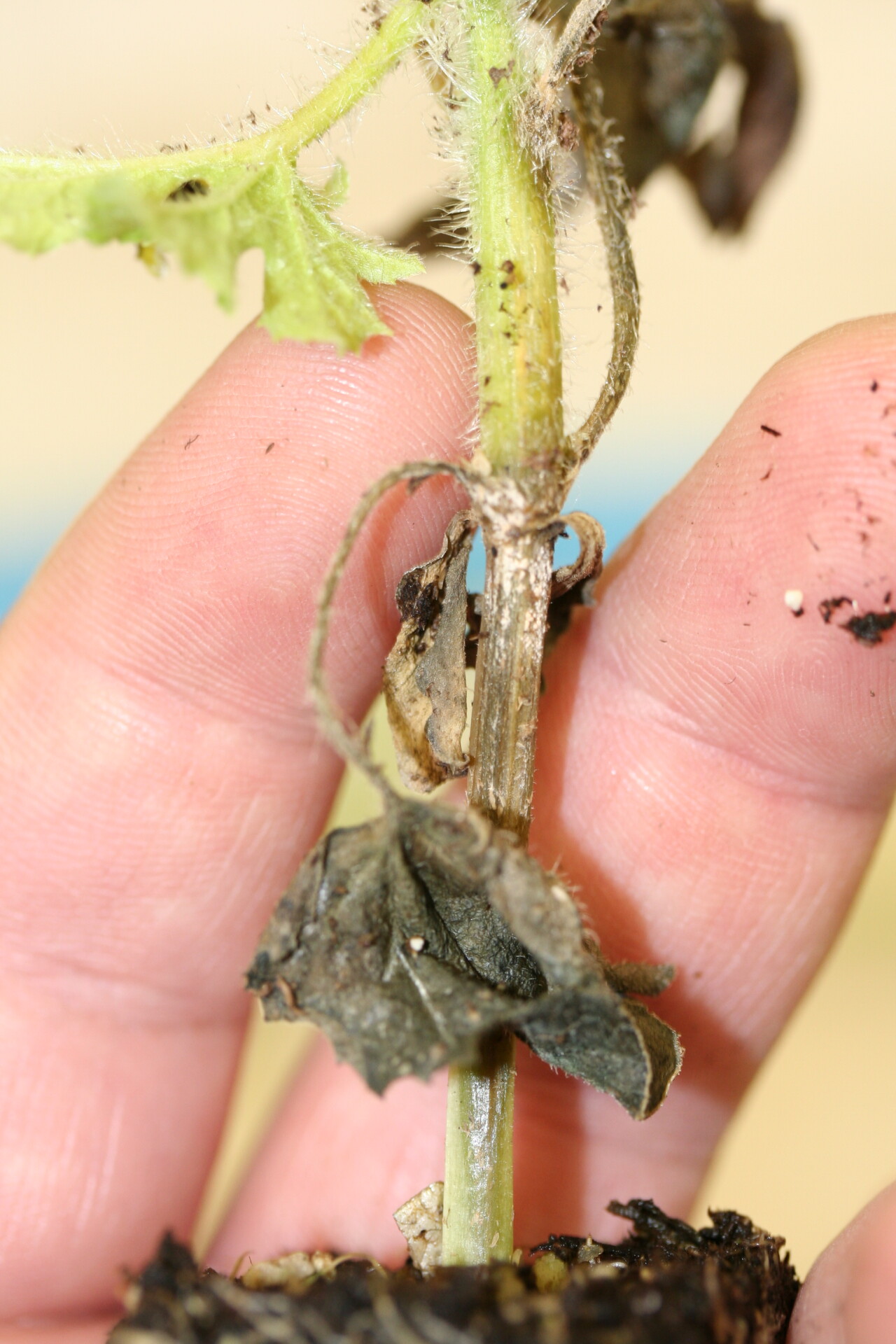 Figure 8. Hypocotyl has collapsed and become necrotic due to Fusarium wilt in watermelon at the transplant stage. Note pink-like sporulation of Fusarium fungus at top of hypocotyl.
Figure 8. Hypocotyl has collapsed and become necrotic due to Fusarium wilt in watermelon at the transplant stage. Note pink-like sporulation of Fusarium fungus at top of hypocotyl. Phytophthora blight
 Figure 2. Phytophthora blight has caused the water-soaked symptoms on the base of this watermelon including the white sporulation of the fungus.
Figure 2. Phytophthora blight has caused the water-soaked symptoms on the base of this watermelon including the white sporulation of the fungus. 
